
7 ISSUE 160 | B ODY AND BALANCE HEALTHY LIVING TIPS FOR THE HOLIDAYS PG 56 PG 09

Life is like riding a bicycle. To keep your balance, you must keep moving.
 - ALBERT EINSTEIN
- ALBERT EINSTEIN
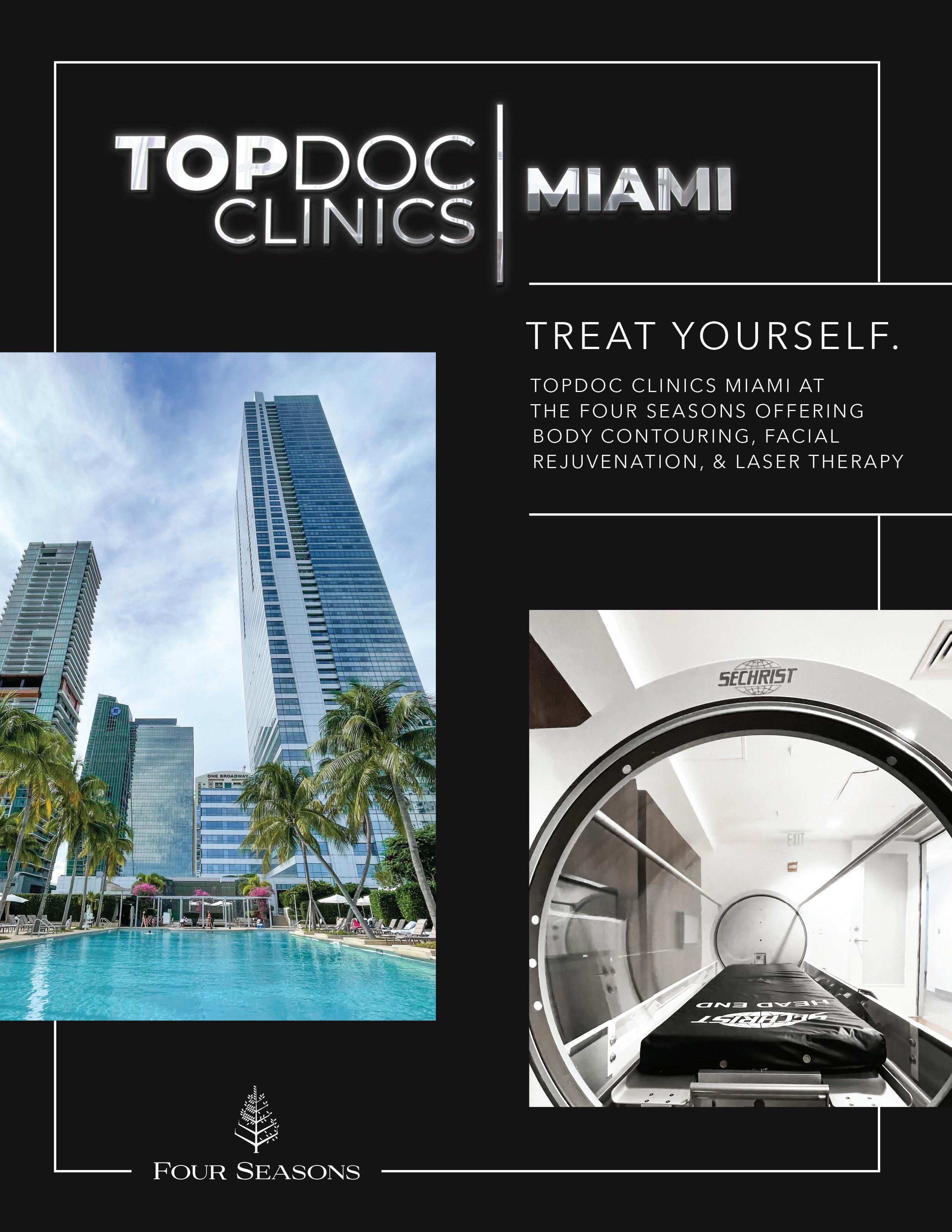
Suffer from acute or chronic wounds? Healing shouldn’t be painful.
Experience pain-free treatment through a saline mist that reduces and removes bacteria while promoting healing. UltraMIST is a non-contact, lowfrequency ultrasound that painlessly promotes healing when administered by any trained health care professional.
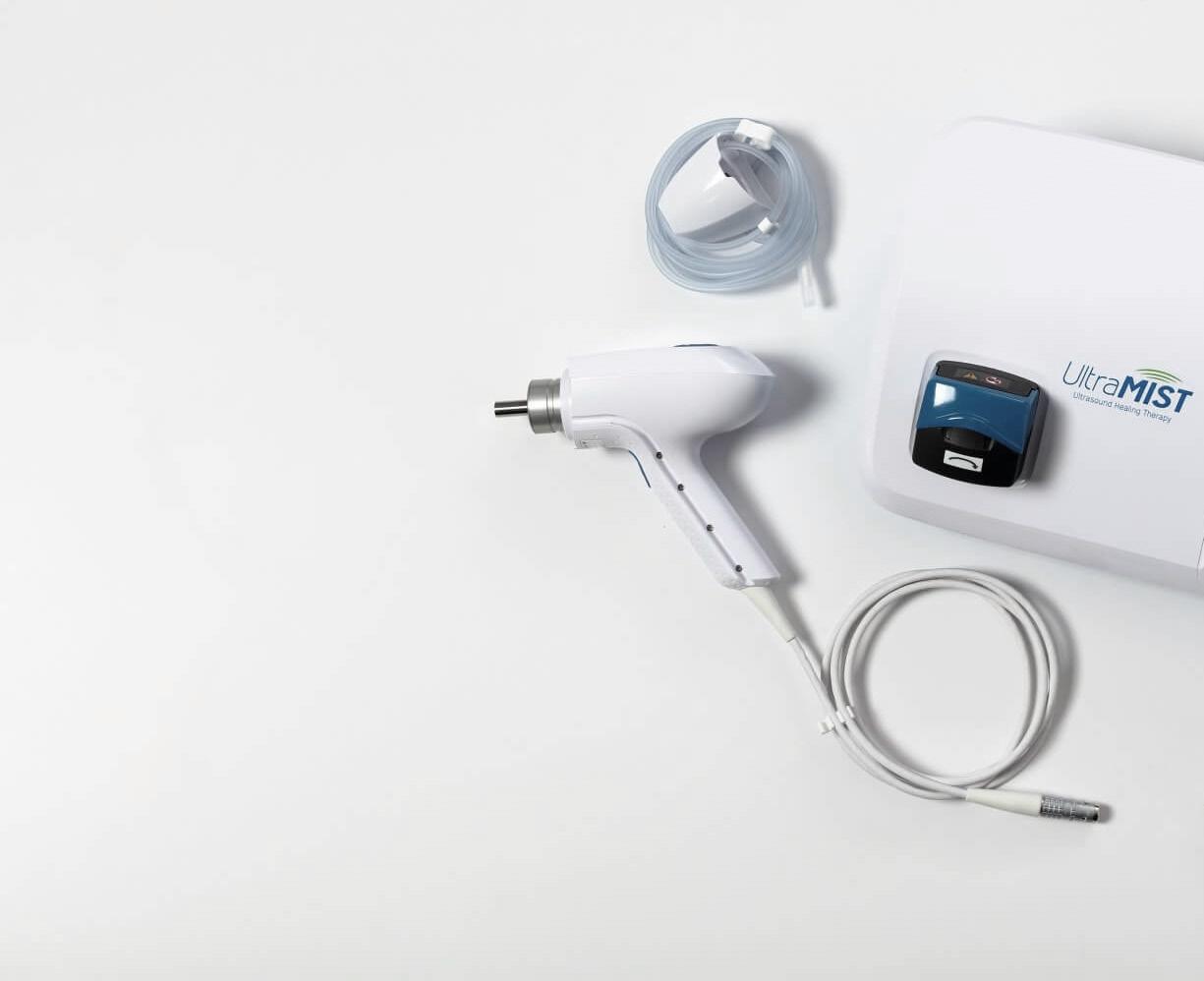
Learn more



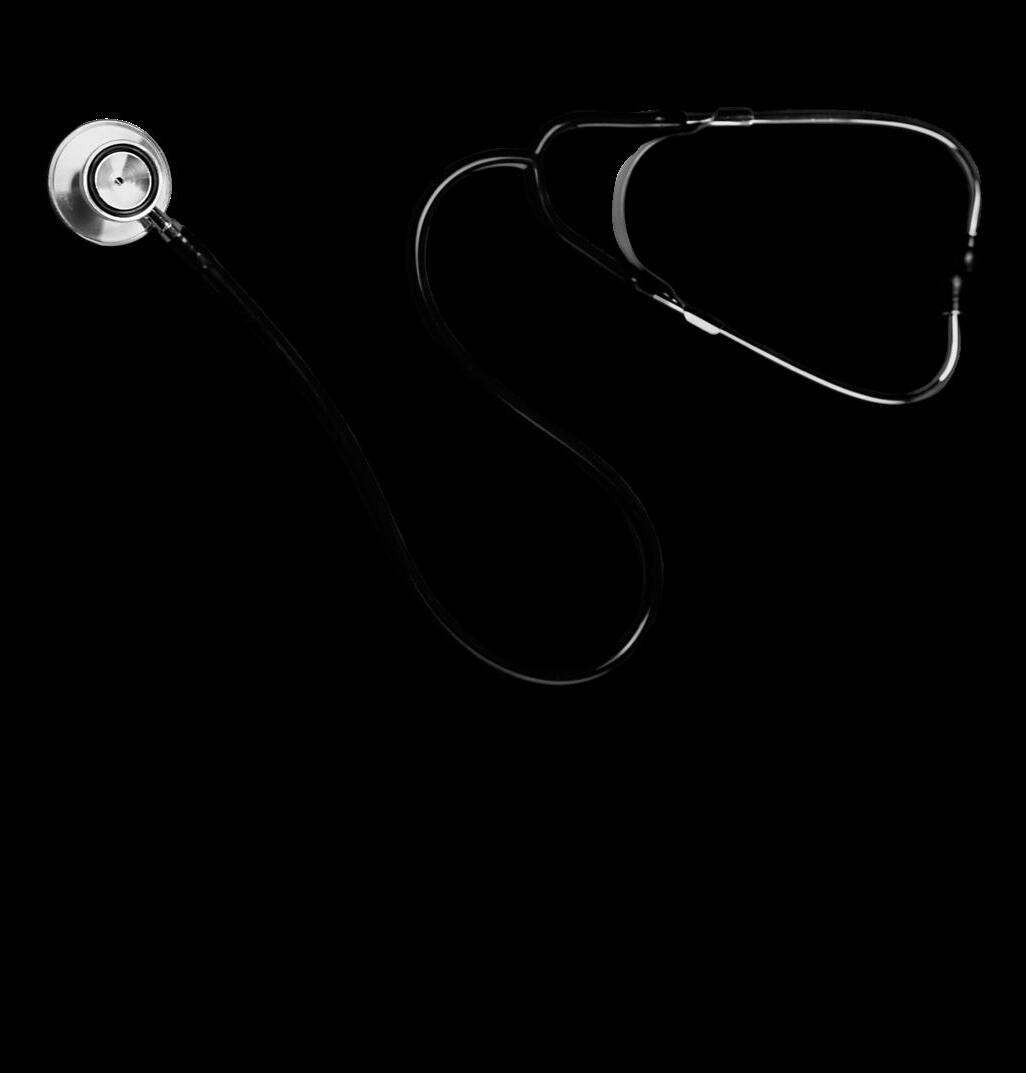
MICROVASCULAR TESTING SYSTEM
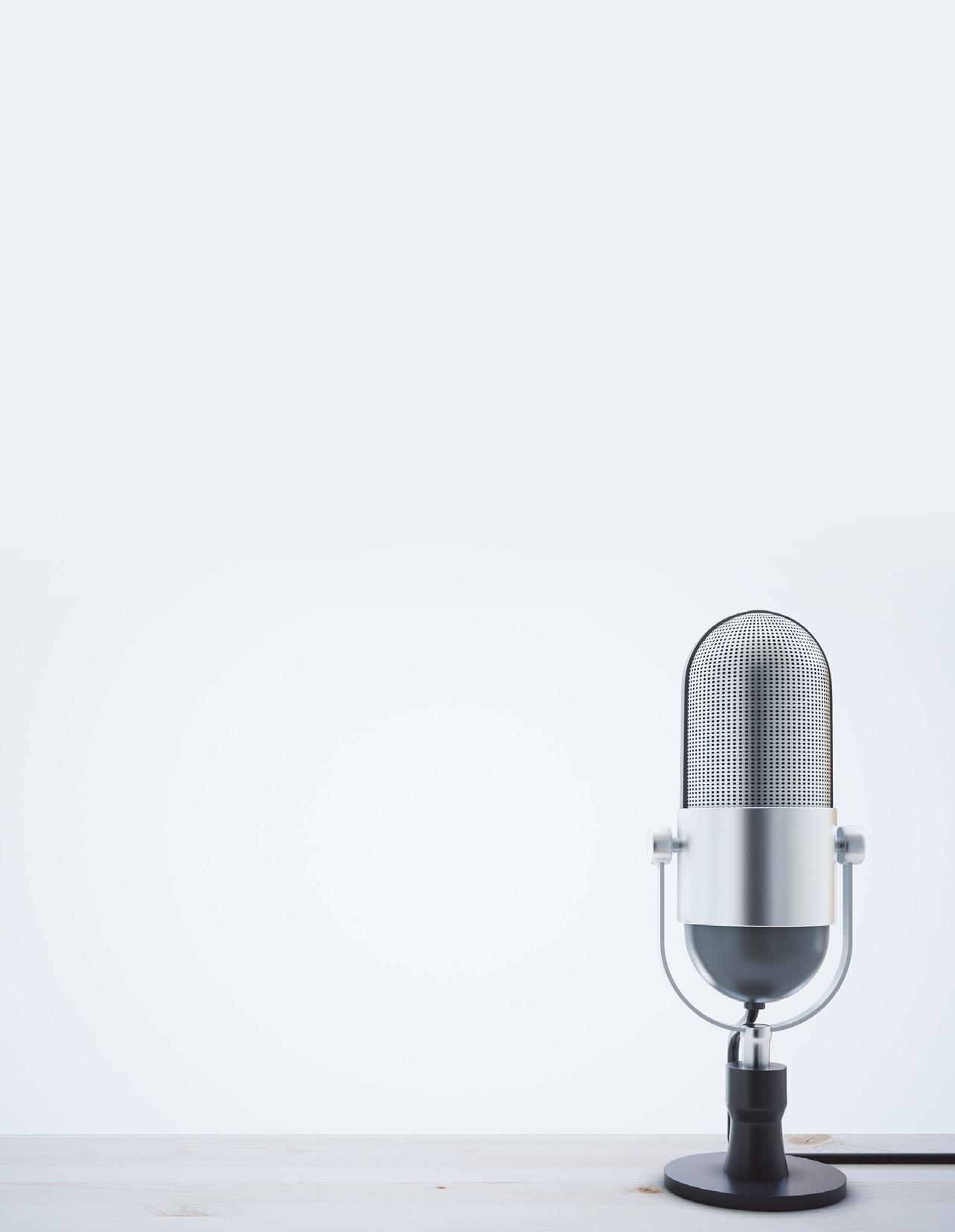
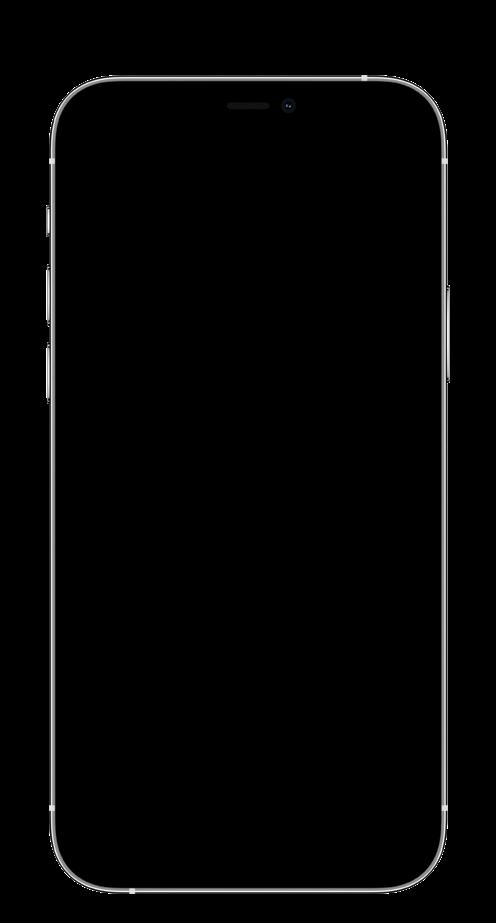
• Early Detection of Chronic Disease in Asymptomatic Patients


• Diagnose Complex Symptoms
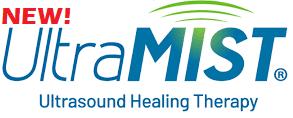
• Increase Patient Compliance with Treatments
TopDocDX presents a real-life picture to the patient, with all its positive and negative influences. Therefore, physicians will have an enhanced understanding of the patient’s overall health. This clinically powerful and non-invasive testing system for hidden diseases in asymptomatic patients provides the patient with an inside-out look on their health.

15-MINUTE NONINVASIVE ON-SITE DIAGNOSTIC TESTS
Listen
Learn more
to the latest in health and wellness on Spotify today!
CONTRIBUTORS
TEAM
EDITOR IN CHIEF Brianna Connors JUNIOR EDITOR Riley George CHIEF MARKETING OFFICER Hannah Townes
MARKETING DIRECTOR Derek Archer SOCIAL MEDIA SPECIALIST Lauren Rider
GRAPHIC
DESIGNER Sarah Cook Adreana Mendez, Catherine Pannel, Drew B., Gaye Newton, Gentry Shannon, Luke Argue, Mălina O. R., Peter C., Zenith Lundell
Leading a healthy, well-balanced life is a challenging undertaking for many of us. New advancements in lifestyle or nutrition come to life daily, and the busy rhythm of our lives often prevents us from keeping up with what’s fun and fresh.
Here at Top Doctor Magazine, we are on a mission to bring these advancements to your attention and become a source of inspiration for those who want to live their lives to the fullest. Our contributors will constantly keep you up to speed with fresh, entertaining, and reliable content, from nutrition and travel to lifestyle choices!

We hope that our handpicked ideas will guide you towards self-realization, selfimprovement, and willingness to help those around you better themselves.

A WORD
Blocking Noise, Blocking Mold, Protecting Health: An Interview with Natalia Chudy




08 54 36 40 44 60 24 50 16 58 68 28
Different Kinds of Massages
Children Need Milk
Restoring Vitality With Regenerative Medicine: An Interview With Dr. Hassan Bennani, MD
Do
for Strong Bones to Develop?
Hormone Replacement Therapy 7 Healthy Living Tips for the Holidays Everything You Need To Know About Polycystic Ovary Syndrome (PCOS) Is Alone Time Important for Your Health? What Do Healthy Relationships Look Like? Brown Rice vs. White Rice: Health Benefits
are
LIFESTYLE MEDICAL NEWS NUTRITION SEXUAL WELLNESS How Healthcare Technology Has Changed Over the Years CONTENTS 36 08 28 40
What
the Causes for Appendix Rupture?
-
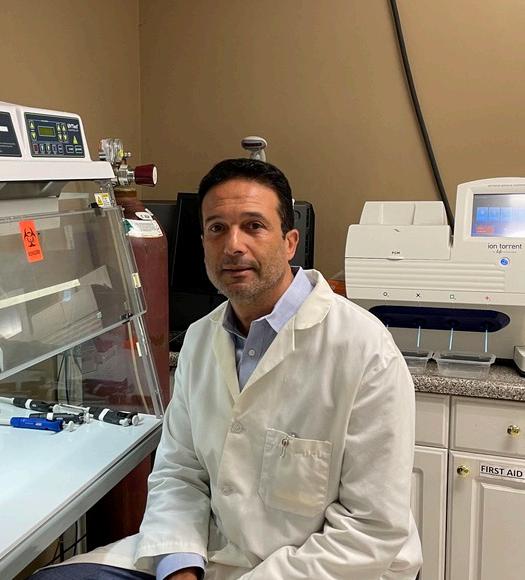
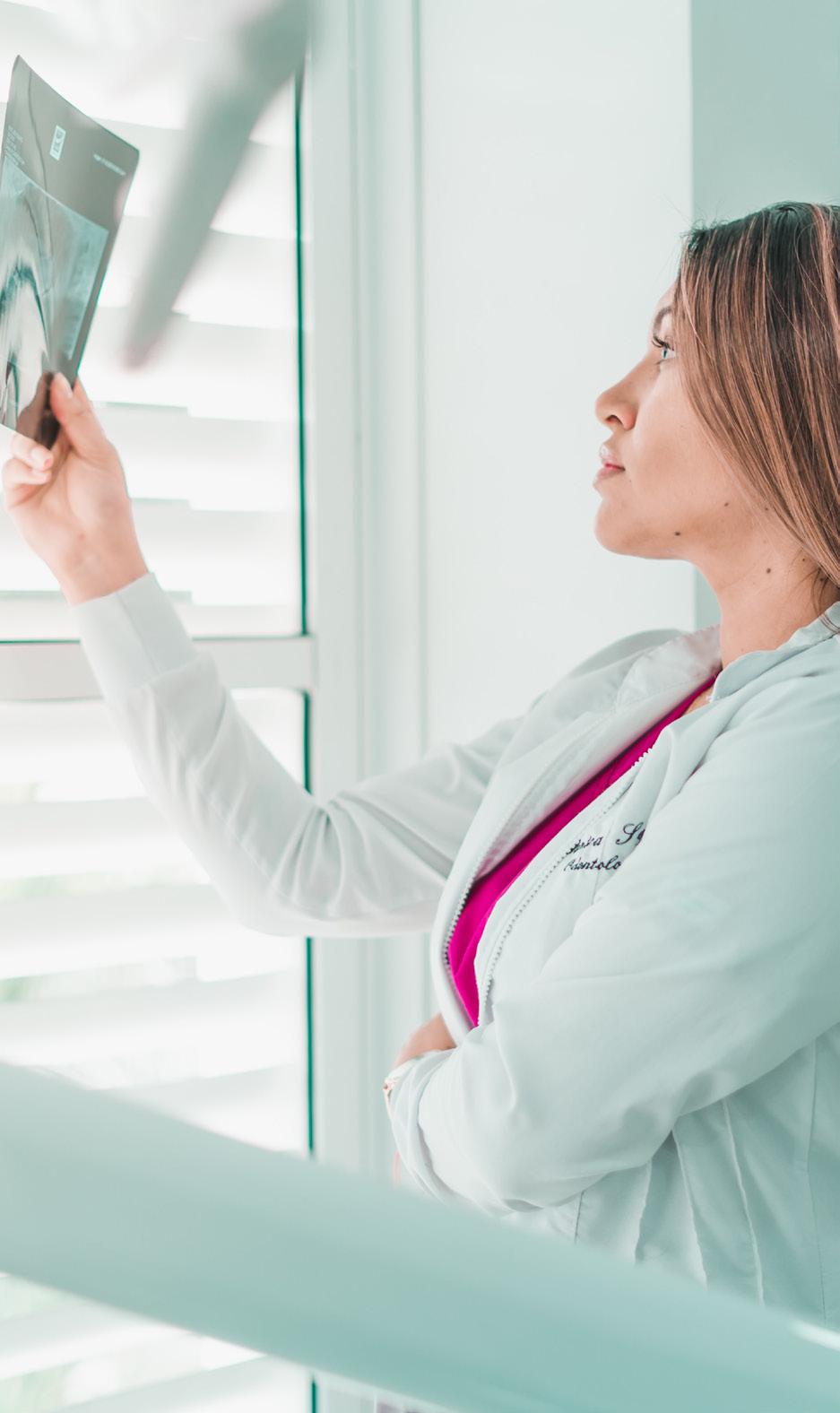

Dr Hassan Bennani, MD
50 60 44
“IF WE CAN PREVENT DISEASE AND HEAL OUR BODIES FROM THE INSIDE, WE CAN ASPIRE TO LIVE A MUCH BETTER LIFE.”
What Do Healthy Relationships Look Like?
 WRITTEN BY M Ă LINA O. R.
WRITTEN BY M Ă LINA O. R.
8
Every relationship is different on almost every level, with different answers to fundamental questions such as:
WHAT IS ACCEPTABLE IN A RELATIONSHIP?
WHAT IS NEEDED FOR IT TO WORK OUT?
WHAT MAKES THE RELATIONSHIP EITHER HEALTHY OR TOXIC?
Usually, the details that turn a relationship from healthy to toxic are the same: infidelity, distrusting each other, constantly lying, etc.
Keeping your romantic relationship healthy is not an easy task; it requires effort, patience and a solid dedication to building a future with your loved one. Only then will your relationship thrive in a positive environment, a sine qua for preserving your and your partner’s mental and physical health.
How Do Healthy Relationships Work?
The term ‘healthy relationship’ is very subjective, as the definition is decided by two people (in a polyamorous relationship, by more than just two people) depending on their needs.
First, you must remember that every relationship is unique. Depending on your age, personality, needs and preferences, your romantic relationship differs from the one you had with someone else or even with the same person. As we mature and redefine our personalities, the ways we interact in relationships, especially romantic ones, differ.
Having a healthy relationship does not mean you and your partner must have the same hobbies, preferences and lifestyle. But, if you cannot be with someone who, for example, has a different view on significant subjects, it is usually healthier for you and the other person to end your relationship. It is natural for arguments between romantic partners to occur, but not daily.

Top Doctor Magazine / Issue 160 / 9
What Healthy Relationships Look Like
TRUST
Trust is a crucial element in having a healthy relationship. Having and being an honest partner means you trust your other half. You can achieve this by:
Not keeping secrets from each other; Not interrogating your partner when they are not with you about their whereabouts or who they are with;
Not being afraid that your partner will cheat on you with someone else;
Not constantly surveilling them through social media or the people they are around.
RESPECT
Respecting one another is necessary for a healthy relationship. You must respect each other’s past, feelings, needs and boundaries. No one, not even your romantic partner, is allowed to overstep something you deeply care about, especially boundaries.
For example, if you do not enjoy a relationship full of cursing or mean words, your partner has to respect that. And respect comes along with love. If your romantic partner truly loves you and is willing to adapt for you, they will not disrespect your choices and needs.
TEAMWORK
Remember, your relationship is not a contest between you and your partner. Both of you are a team. You need to have each other’s back and support your partner’s dreams and wishes, even though you may not always see eye to eye.
10

Top Doctor Magazine / Issue 160 / 11

12
INTIMACY
Intimacy is a big part of a romantic relationship. It’s what sets this type of relationship apart, which is why you have to discuss it openly and see if you are compatible. If you both enjoy having an active sex life, then your relationship will be healthy, and the avenue of comfortably initiating sex and openly discussing desires, likes and dislikes will always be open.
TIME APART
There is no shame if you sometimes wish to be apart from your partner. People have different needs, and some enjoy spending time alone. Many prioritize spending time with their partners, but that does not mean you must neglect your personal space and time. Having some time for yourself to relax, practice a hobby or meet up with friends and family leaves time for you to long for your partner.
COMMUNICATION
Discussing your issues and needs with your partner depicts a healthy relationship. You have to feel comfortable about opening up to these types of discussions or any issue you may suffer. Do not be distracted by the fact that your partner may have a different opinion; they are there to help you get through your problems and celebrate your success.
Remember that communication goes both ways. Just like your partner is listening to you, you must do the same for them!
Healthy vs. Unhealthy Relationships
Just as people define healthy relationships, they can cause a relationship to go downhill. Toxic relationships can spring up between a victim and an aggressor or between two aggressors. If you are in a toxic relationship, you may find your partner:
STEPPING OVER YOUR BOUNDARIES;
PRESSURING YOU INTO HAVING SEX WITH THEM; CONSTANTLY MONITORING YOU AND YOUR WHEREABOUTS;
NOT TRUSTING YOUR WORDS AND ALWAYS DEMANDING PHYSICAL PROOF;
HATING ALL OF YOUR FRIENDS JUST BECAUSE YOU SPENT TIME WITH THEM AND NOT WITH YOURSELF; NOT COMMUNICATING OPENLY ABOUT SUBJECTS SUCH AS OLD PARTNERS, FRIENDS AND FAMILY.
Can a Relationship Go from Toxic to Healthy?
Top Doctor Magazine / Issue 160 / 13
If two partners wish to change their toxic relationship into a healthy one and will genuinely work for it, anything is possible! As we already noted, adapting is the first step toward a healthy relationship, and the same goes for toxic relationships: they require a profound change, which can be hard sometimes.
Adapting to your partner’s needs is essential if you wish to turn your toxic relationship into a healthy one. Discuss what bothers you in the relationship and listen to your partner’s wishes. If you think you can change for the better and your partner, a happy and healthy relationship lies just around the corner!

A Parting Reminder
Having a romantic relationship with someone that you love will be easy most of the time. Do not get scared when you hit a bump in the road. It is normal for challenges to appear from time to time but if you are in a healthy relationship, it will be easy to get over them.
14

Top Doctor Magazine / Issue 160 / 15
Different Kinds of

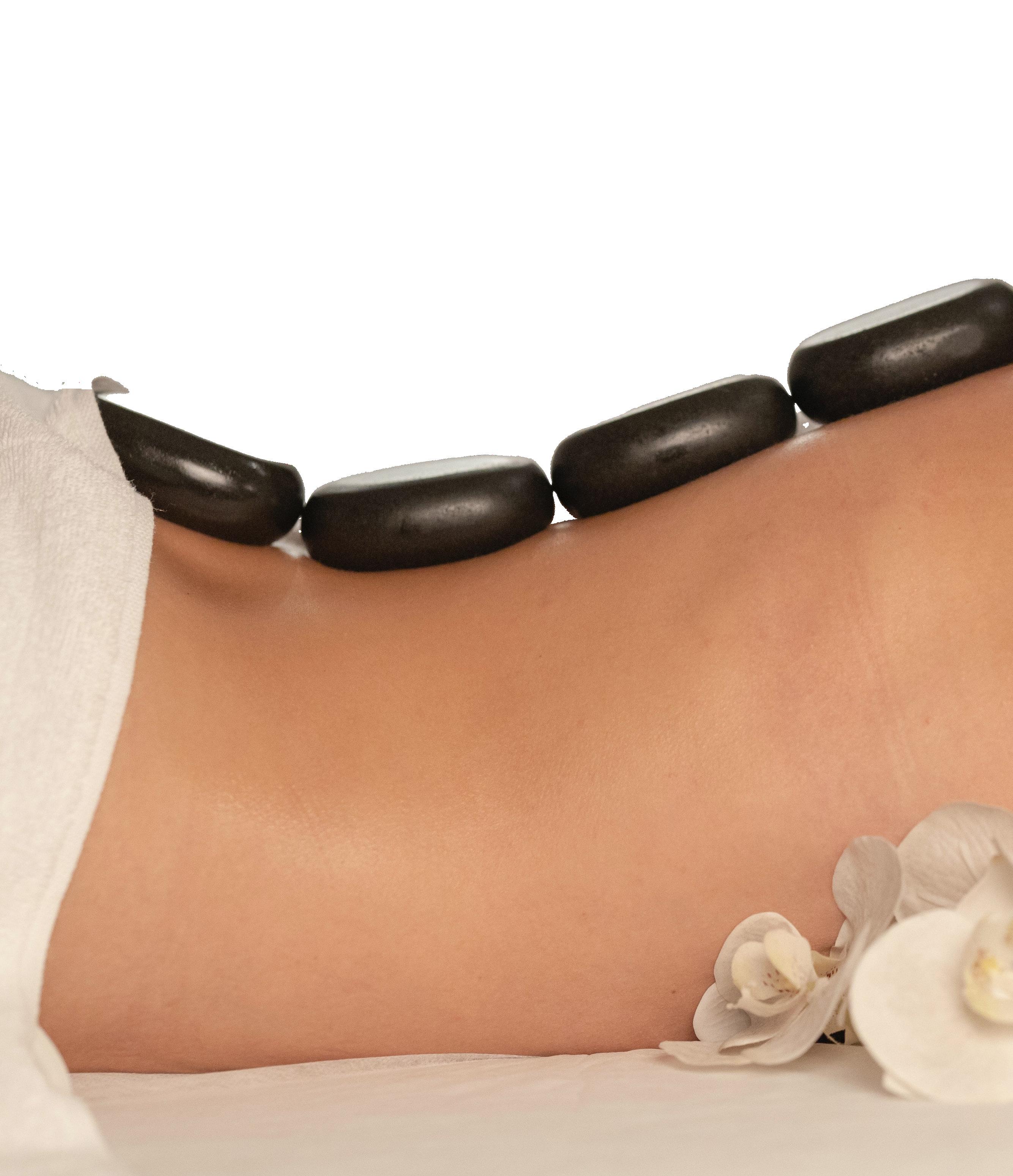
16
WRITTE N BY L UKE ARGUE
When you imagine a relaxing massage, you likely see yourself on a table with someone gently massaging your muscles with their hands. But did you know that many different styles of massages exist? What’s more, various kinds of massages can have multiple benefits and healing properties. Each massage can treat a specific issue and provide unique forms of relaxation!
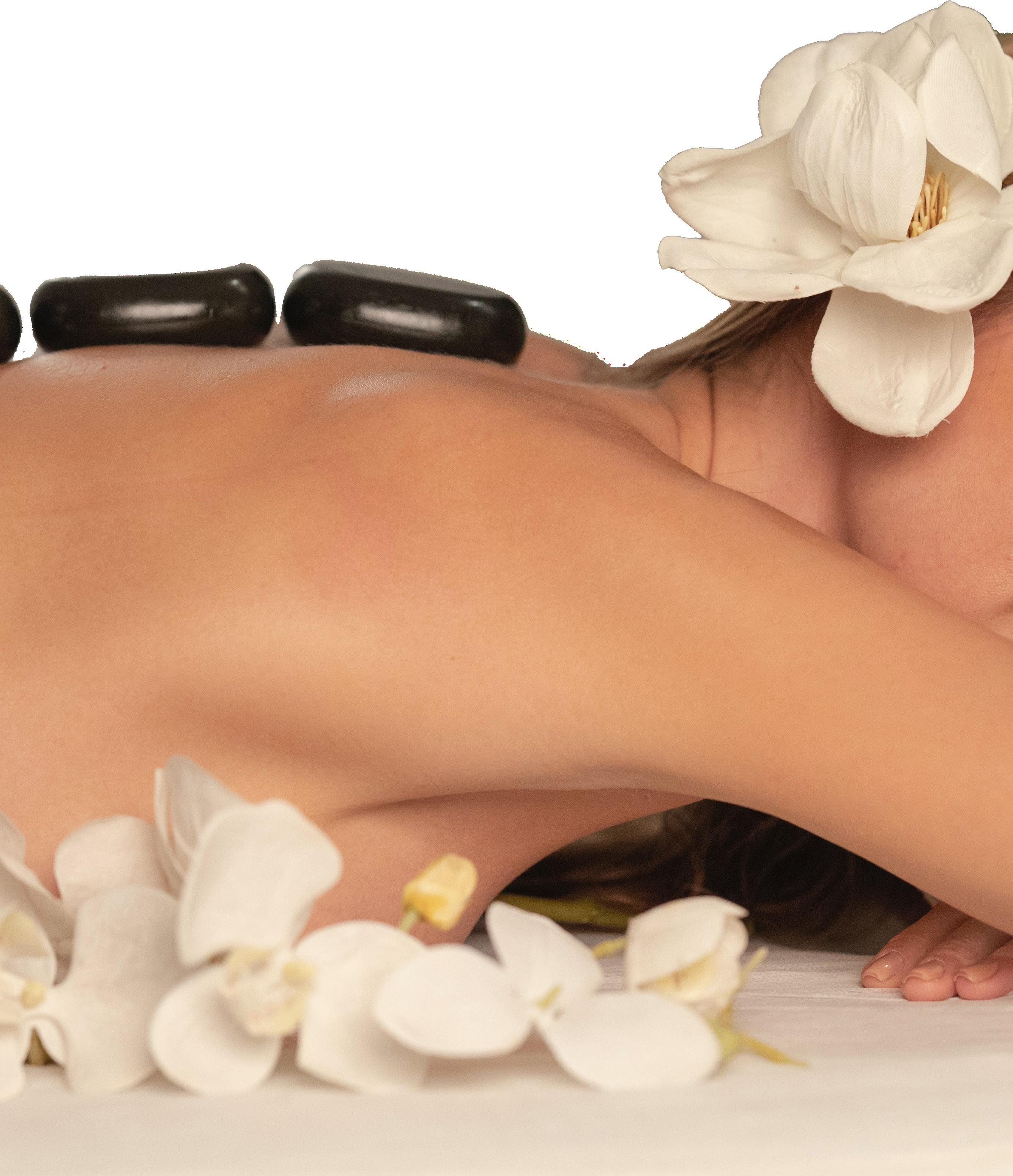
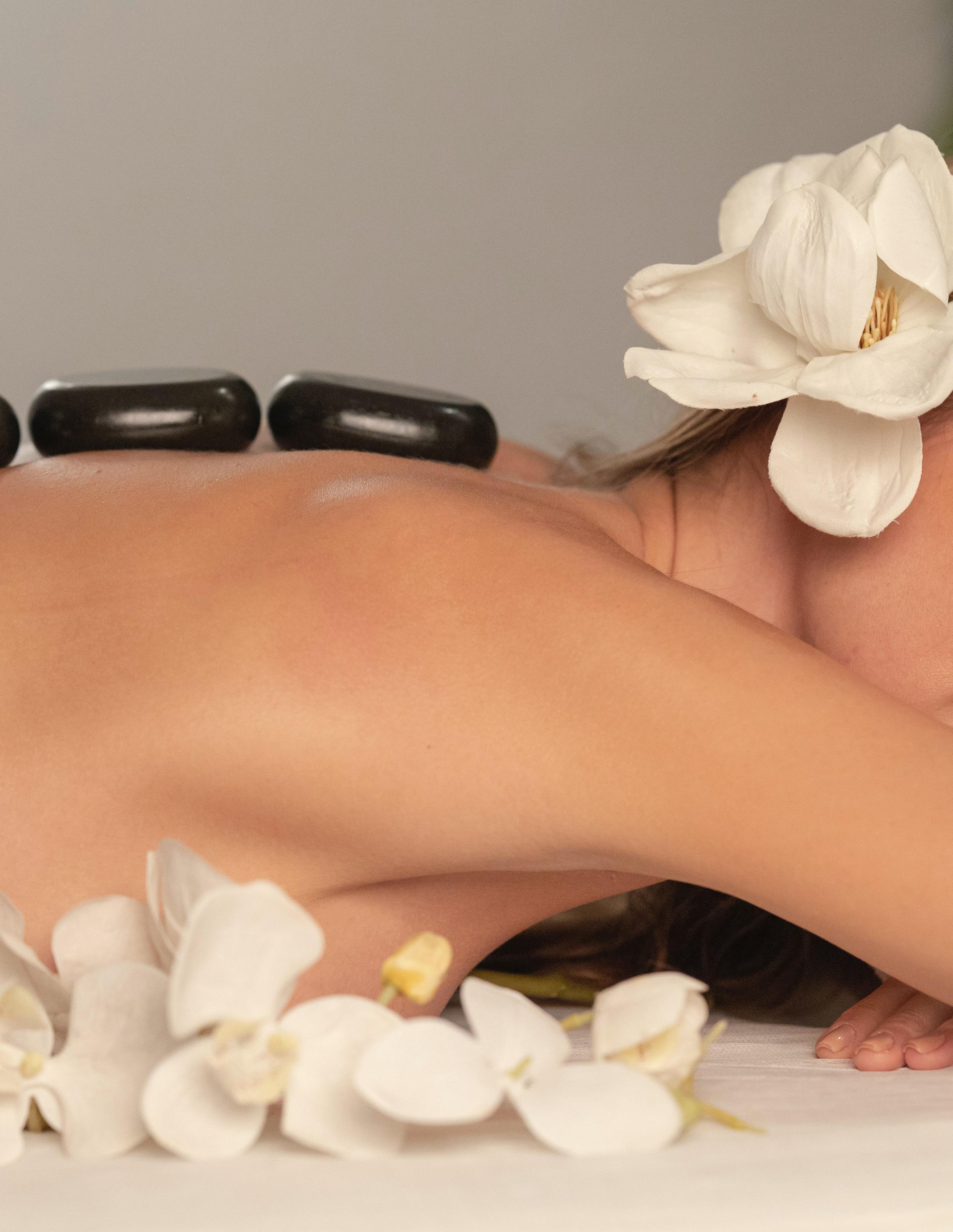
Top Doctor Magazine / Issue 160 / 17
Are Massages Good for You?

Massages are a great way to rest and relax your body by releasing the stress that naturally accumulates over time. Massages can also help improve your body's circulation, energy, immune function and relaxation, all while reducing blood pressure, pain, soreness and tension. Some researchers suggest that massages might also help treat various aches and pains such as headaches, low back pain, nerve pain, forms of joint pain and upper back and neck pain. Massages can even impact chronic conditions like myofascial pain syndrome and mental conditions like anxiety. And then there's the obvious benefit for athletes with massages showing great promise to treat various sports injuries, soft tissue strains and injuries.
Different Kinds of Massages
With the benefits of massages in mind, here are some of the most popular kinds of massages and their benefits:
18
Couples’ Massage
The ever so famous couples’ massage! As its name implies, this massage is for you and your partner or a friend/relative. Other than that, this is just a conventional massage.
As for its benefits, a couples’ massage can help bring you and your partner closer together — the result of your partner and you being in a relaxing and stress-free environment that makes it easier to open up emotionally and lower any defenses you might have. Both your body and relationship can get an opportunity to rest, relax and reset.
Cranial Sacral Therapy
This is a more technical form of massage and is often treated as a form of medical therapy or treatment. Cranial sacral therapy works by gently manipulating the bones in the skull, spine and pelvis to improve cerebrospinal fluid circulation through the body.
Because this therapy focuses on your spine and nervous system, it can help treat nervous or spine and pelvic-related conditions such as:
Migraines; Headaches; Neck pain; Sinus and ear infections; Mood disorders; Scoliosis; Constipation.
Moreover, cranial sacral therapy is more effective than sham treatment for treating pain intensity in non-specific neck pain.
Myofascial Release Therapy
Myofascial release therapy focuses on releasing your muscles’ connective tissue. This massage works by applying pressure through the therapist’s elbows, a foam roller or ball to the muscles, joints and bones. The pressure then works to break down the tight fascia in the muscle, which leaves the muscle relaxed.
This particular massage is most commonly used to treat very tight muscles as it targets the connective tissue causing the tightness. It can also be used to help treat myofascial pain syndrome and headaches.
Top Doctor Magazine / Issue 160 / 19
Abhyanga Oil Massage
This type of massage is similar to a conventional massage but includes the usage of abhyanga oil. It works by massaging the oil into the skin and all over the body.
Unlike some of the previously mentioned massages, the emphasis of this massage is on the skin, not the muscles. Instead of trying to release muscular tension, the working of abhyanga oil onto the skin is designed to nourish it.
Abhyanga oil massages can help:
Reduce stress; Improve skin health and moisture; Reduce blood pressure and muscle stiffness.
An added benefit is that this massage can be performed at home with or without a practitioner. All you need is some oil and a helping hand or two!
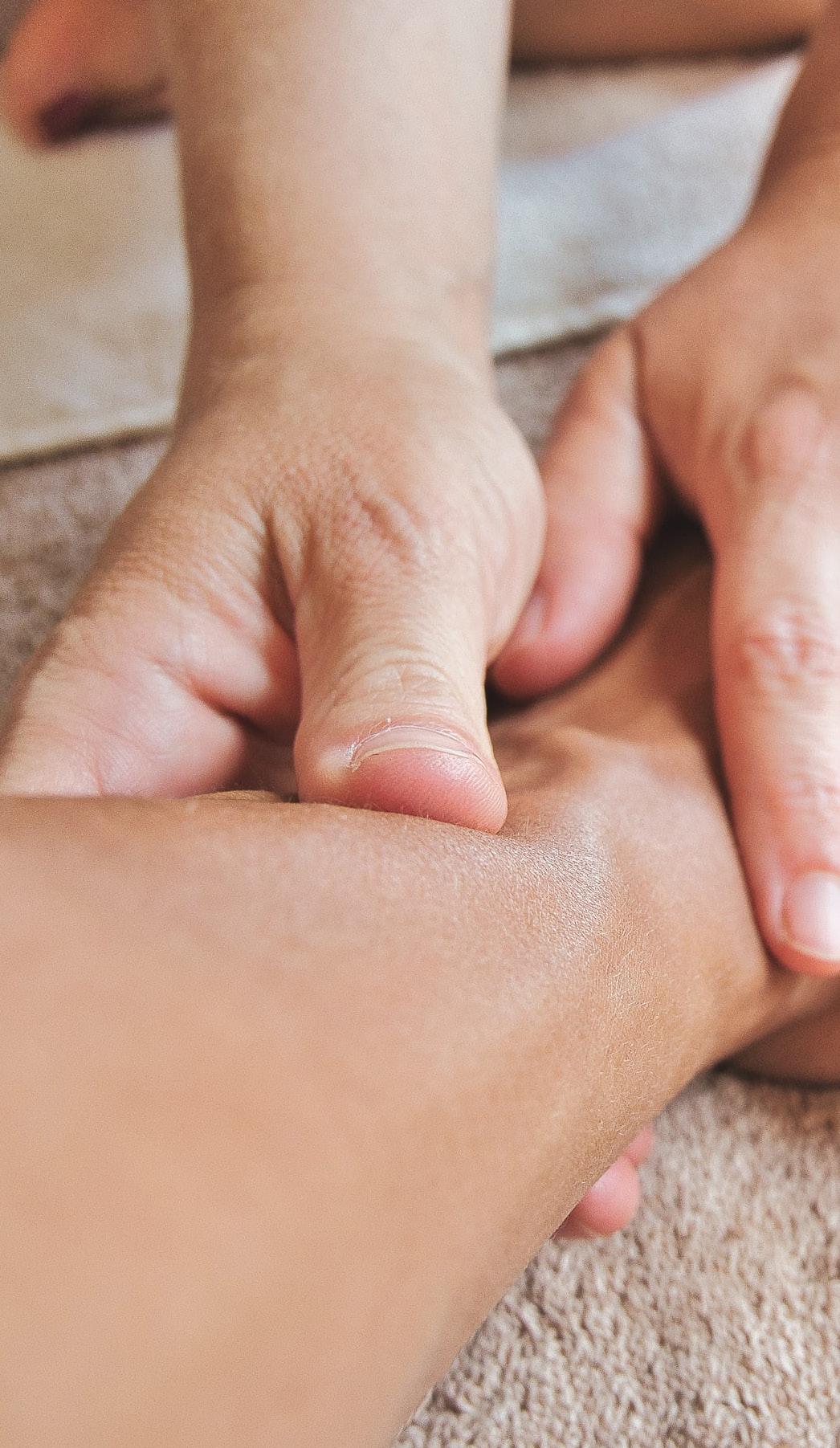
Deep Tissue Massage
Deep tissue massages unsurprisingly focus on the deep tissue in the body. Specifically, they aim to lengthen and relax the deep tissue while improving the flow of blood and nutrients to the muscles and the elimination of toxins in the body.
Deep tissue massages work by applying slow strokes and deep finger pressure to focus on the deep layers of your body’s connective tissue and muscles. Deep tissue massages are most effective for people with soreness, injuries, tightness, or chronic muscle pain because they penetrate deep into the body to heal underlying pain and tension.
Sports Massage
Sports massages are designed specifically for treating sports injuries. Unlike other forms of massages designed to provide relaxation to someone with a lot of stress in the body, sports massages support very athletic and physically demanding lifestyles. These massages usually begin with an assessment so your therapist can determine what kind of treatment you need.
The massage will vary greatly depending on your injury or goal. Sports massages can include movements like:
Stroking; Kneading; Compression; Friction; Stretching; The usage of trigger points.
In addition to relieving athletic injuries, sports massages help improve athletic performance, sleep, flexibility and well-being.
20
Trigger Point Massage
A trigger point massage, as indicated by its name, works by treating trigger points, i.e., areas of tightness within the muscle tissues that cause pain in the body. It works by applying alternating pressure on the trigger point to alleviate pain and tightness.
This form of massage is particularly good for people with chronic pain. Some research has shown that it can reduce the frequency, intensity, and duration of tension headaches and migraines.
Thai Massage
Thai massages are unique; they typically involve the patient lying on the floor and participating in the treatment. Similar to yoga, Thai massages use a series of gentle movements while the therapist applies pressure on the body. It also includes pulling forces like knuckle cracking, pulling your toes and fingers and walking on the patient’s back.
A Thai massage’s benefits include increased flexibility, circulation and energy levels. So, whether you’re a yoga enthusiast or someone looking to rest, relax and stretch, Thai massage therapy can be a fun and exciting way to strengthen and lengthen while releasing unwanted tension!
Hot Stone Massage
Hot stone massages use heated flat stones placed on the body to relax your muscles. The stones are typically placed on your stomach, chest, face, palms, feet, toes and along your spine. Other than the usage of warmed stones, hot stone massages are not unlike a conventional massage.
Most often, your therapist will massage your body with long strokes, vibration, tapping, kneading and circular movements. After using the hot stones, your
therapist might use cold stones to end the session by soothing the skin and calming any swollen blood vessels.
Because they use warmth, hot stone massages provide a number of benefits in addition to those provided by conventional massage. For instance, host stone massages can help treat conditions like rheumatoid arthritis, reduce pain and improve grip strength and range of motion. They may also help relieve the symptoms of certain cancer and autoimmune diseases.

Top Doctor Magazine / Issue 160 / 21
Swedish Massage
This incredibly relaxing massage is all about leaving you feeling rested, relaxed and rejuvenated. It uses long strokes and light/firm pressure to provide relaxation to your body. Because of the application of light and firm pressure through long strokes, glides, kneading, tapping and rubbing, Swedish massages are perfect for people looking to reduce tension in their muscles.
Swedish massages have also been found to reduce anxiety. Researchers performed a study where participants suffering from general anxiety without receiving medical treatment had a Swedish massage twice a week. The subjects reported significantly reduced anxiety.
Aromatherapy Massage
Aromatherapy massages add essential oils (e.g., Roman chamomile, lavender, tea tree, lemon, ginger and cedarwood) to the conventional massage to improve mental and physical health.
An aromatherapy massage’s effect on you largely depends on what kind of oil was used in the massage. Roman chamomile, for example, has been shown to help treat anxiety.
A Parting Reminder
There are a lot of different kinds of massages out there, so it's easy to get lost between all these possibilities and become overwhelmed. Instead, think of massages as tools — each one has something that it is particularly good at, so there isn't such a thing as a wrong decision.
Every massage has benefits, and they will all help in some ways. It just means that finding that perfect fit might take a few tries. Take encouragement in the fact that there is an ideal massage out there for reducing your particular kind of pain, ache or tightness. You just have to find it!
22
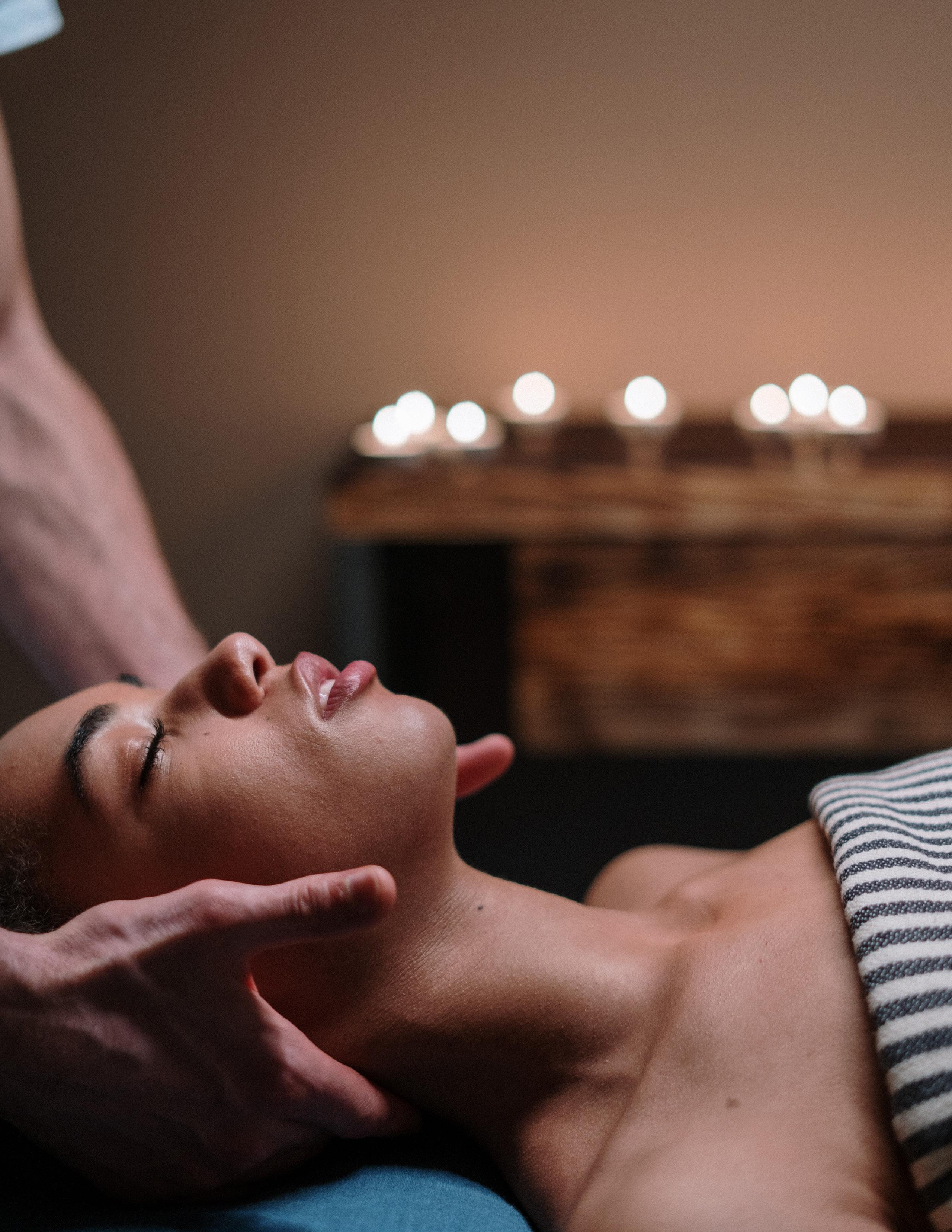
Top Doctor Magazine / Issue 160 / 23
alone time
IS IMPORTANT FOR YOUR HEALTH?
WRITTEN BY MĂLINA O. R.

24
Although we’re social creatures thriving on interactions with others, too much time spent in the company of others might backfire. How many times did you promise your self to stay home, all curled up in bed with a good book, just to be distracted by a knock on the door or a phone call?
Social interactions may be rewarding, sure, but so is alone time. Many people dread being left out of their friends’ latest adventures, but the fear of missing should not overcome the fact that spending time alone is essential for solid mental health.
WHAT IS ALONE TIME?
Alone time is the practice of taking some time for yourself during which you can do anything you want. The period can be defined only by you. Some people need only a couple of days, but if you feel like you need a week or more of alone time, that’s normal.
It all depends on the type of person you are — you can define your alone time as you wish. You can ei ther practice hobbies or just lay in bed all day. Alone time cannot be defined, as the concept is subjective.
WHAT ARE THE BENEFITS OF BEING ALONE?
But why is alone time so beneficial to people? This is a question many people ask themselves before or while spending some quality time in their own com pany. Before you can truly see the benefits of having some alone time, you must understand that ‘alone time’ is entirely different from ‘loneliness.’ Alone time is just a period in which you take some time away from people and enjoy some R&R. Loneliness, however, is the feeling of having no one around you.
You Have Total Control Over Your Schedule
Alone time allows you to do whatever you want and love. You don’t have to compromise or plan yourself around other people anymore. When taking some alone time, try doing what makes you happy. Maybe you forgot about a hobby you once loved, such as reading, painting or even pottery. If you don’t find yourself carving for an old hobby, try a new one! This is your time and yours only.
Self-Reflect
Having to continuously interact with people from your social group can make it challenging to stop
Top Doctor Magazine / Issue 160 / 25
and think about yourself. Self-reflection is essential when discuss ing a healthy lifestyle, as you are the most crucial person in your life. And before you can help others, you need a positive mindset, which you cannot achieve without self-reflection.
Alone Time Allows You to Relieve Stress
Alone time is a critical element of relaxing your mind. Spending time with people and not taking any time for yourself can stress not only your body but your mind as well. People who choose to spend some alone time enjoy relaxation and stress relief. You can spend your alone time engaging in different relaxing activities, which, in the end, will ease your mind and body.
Alone Time Provides a Productivity Boost

One study shows that people are more productive when alone than when others surround them. Increase your productivity by taking some alone time for rest & relaxation.
Focusing On Your Health
Always having your mind occupied with other people’s needs can easily make you forget about yourself, especially when discussing health. Alone time allows us to improve our health, whether talking about mental or physical health. By reflecting on your health and noticing what is wrong, you can take the steps necessary for im provement: changing your diet, working out, visiting a therapist, etc.
A PARTING REMINDER
Alone time may be scary for some, but it’s a necessary step for your well-being. It’s essential to put yourself first and do what is healthy for you, even if this may seem far-fetched to others. Next time you find yourself overwhelmed and stressed, take some alone time, which, in the end, will make you feel a million times better. And remember, do not confuse ‘alone time’ with ‘loneliness’ as they are two completely different things.
26

Top Doctor Magazine / Issue 160 / 27
Healthy Living Tips for the 7 Holida y s

28
The crunch of the leaves under your feet and the smell of pumpkin spice wafting out from your nearest coffee shop is a sure sign that the holidays are near! Each holiday season, traditions, nostalgia and excitement fill the air, and temptation often gets the upper hand. Looking after your mind, body and soul can be daunting when you're up against rich Thanksgiving meals, boozy endof-year parties and all the series you still need to catch up on. Poor choices and impulsive decisions do not have to put a damper on your holiday. So what if you could "have your cake and eat it too" using a few healthy holiday tips this coming festive season?

Top Doctor Magazine / Issue 160 / 29
Set Clear Work-Life Boundaries

A Gallup-Healthways Well-Being Index score states that Americans who take regular trips have better well-being than those who do not across all most income groups. A pro mental health tip for the holidays is to take time off.
This approach goes hand in hand with setting clear boundaries for yourself and your boss. A United States Travel Association study found that a staggering 768 million vacation days went unused in 2018. Setting boundaries allows you to distinguish where your work life starts and ends.
Absence does make the heart grow fonder. Remember your first month at a new job? Do you recall the energy and gogetting mentality you had? You can have that back by giving yourself the space to return to the center. Allow yourself the time to find purpose and meaning amid all the chaos life brings.
Chronically overworking yourself leads to a foray of different physical and mental issues. The World Health Organization (WHO) published a study stating that overworking was linked to 745,000 deaths yearly from stroke and heart disease. Boundaries are healthy and an excellent tool for prioritizing your mental health.
Reinvent Holiday Meals
It often feels as though nothing beats those old family recipes passed down from one generation to the next. Whether your favorite is sticky, sweet pecan pie or thick, flavourful gravy, these meals can often be high in sugar, salt and calories. The Calorie Council’s research reveals that 3,000 calories are consumed at holiday dinners. At the same time, the U.S. Department of Agriculture (USDA) dietary guidelines stipulate that daily calorie intake should be between 1,600 and 3,000 calories. Not every meal can be perfectly healthy, but there are many ways to tweak and tinker with your favorite dishes to have a healthier holiday.
Sticking to homemade recipes means ensuring each ingredient that goes into your dish. You can regulate salt and sugar. You can do away with trans fats. According to Nutrients Journal, these foods increase the risks of: Heart disease; Obesity; Type 2 diabetes; Certain types of cancer.
Swapping out processed sugar for Medjool dates or fruit in desserts or thickening sauces with gluten-free or whole wheat flour without adding extra unhealthy fats are simple, healthy holiday tips that significantly impact.
Holiday Meals Are About Being Satisfied, not Stuffed
The goal of having a healthy holiday season is not to remove enjoyment but to savor it — overeating and ignoring your body’s signals that it’s full lead to feeling sick and fatigued. The University of Texas Cancer Center explains that overindulging causes the stomach to expand, displacing and putting pressure on other organs. The body has to increase heart rate and enzyme and acid production to cope with excess food digestion, causing exhaustion and heartburn, among other adverse effects.
Lunches and dinners often run late, so unhealthy snacking is an easy fix to grumbling stomachs. A great way to ensure a
healthy holiday is by grabbing a healthy snack before leaving the house. Whether you’re on your way to a party or going gift shopping with the family, fueling yourself with satiating food keeps your spirits and energy levels high. Dr. Benjamin Vincent of Dundee University stated that decision-making is compromised when you are hungry, meaning you’re more likely to forgo healthier choices at the holiday dinner table.
Reducing portion size allows you to try a bit of everything on the menu while keeping healthy living at the core of your outlook and actions. Skipping foods you can have at any other time of the year makes space for you to enjoy the treats that are specially prepared for this time of year.
2 3 30
1
Alternative Holiday Meal Ideas
Who doesn’t love leftovers the next day? Whether it’s Halloween treats or Christmas lunch, there are healthy ways of extending the joy of the holidays without poorly impacting your health. Skip the ultra-processed Halloween candy and opt to have homemade treats in moderation. Have the turkey without the bread rolls and include colorful vegetables instead. Add the roasted potatoes to a salad or into a soup. This healthy holiday tip helps avoid food burnout and reduce waste. Healthy living is not always focused on what you can
cut out. Pack your meals with wholesome add-ins to diversify the gut microbiome. Numerous healthy food alternatives and additions are accessible and pack a punch in boosting overall wellness. Foods like flax seeds and collagen powder increase nutritional value without drastically altering taste or texture.
According to the American Society for Nutrition, Chia seeds are a rich source of fiber, protein and omega-3 fatty acids. Adding Chia seeds or avocado to desserts will enrich the texture and provide sources of healthy fats to beef up your list of healthy holiday tips.
Put Down the Bottle
The holiday season boasts many a drink: mulled wine, Baileys and eggnog, to name a few. With as many alcoholic drink options as meals, the temptation to overconsume is high. Alcohol units can add up without even noticing, so keeping tabs on how much you drink could be a good practice this holiday season.

According to the CDC, one drink or less per day is what you should consume to lead a healthy lifestyle.
If you are prone to reckless decision-making, ensure that you have an accountability buddy. It is also wise to keep yourself in safe spaces, says David Dorschu, who heads an addiction treatment program in New Jersey.
A great way to minimize drinking is by finding delicious non-alcoholic alternatives. The market for nonalcoholic drinks has grown, so everyone has options. NielsenIQ stated that the non-alcoholic and low alcohol market increased by 4% in 2021. So get creative with your drink choices this holiday!
4 5 Top Doctor Magazine / Issue 160 / 31
Fit in Healthy Holiday Activities
6Healthy holiday activities are a fun way of keeping things interesting, keeping you fit, and keeping your spirits up. Hormones are chemicals responsible for emotional regulation and other bodily processes. They travel through the bloodstream from various glands all over the body, promoting positive emotions. There are four primary “happy hormones:”

Dopamine: a vital component of the brain’s reward system linked to experiencing pleasure.
Serotonin: a mood stabilizer that reduces anxiety and is responsible for regulating appetite, sleep and digestion.
Oxytocin: colloquially referred to as the “love hormone.” It elicits feelings of trust, empathy and care.
Endorphins: a natural pain reliever. They release
feelings of euphoria and satisfaction.
Healthy activities can boost the production of these hormones to make the most of the holiday season. Completing a 10-day yoga challenge or walking every morning can increase dopamine levels. Going outside and experiencing nature while hiking or swimming reduces anxiety and increases serotonin. Knowing that you don’t have to put these healthy holiday tips into practice alone is a considerable comfort. Having a buddy to join in raises oxytocin levels.
Have you ever heard of runner’s high? You can achieve it in part through the production of endorphins. If running a marathon on your holiday is too far of a stretch, other less intense workouts will achieve similar results. The holidays are a perfect time to start the kickboxing classes you’ve been meaning to go to or spend time exploring your neighborhood.
Care for Those Around You
Consumerism sweeps people up during the holiday season. According to Investopedia, Americans spent $10.14 billion on Halloween in 2021. They say that charity starts at home. You can enrich your holiday season by doing more for the elderly in your family. Among seniors’ holiday health tips is confirming they stay hydrated and access food that suits their dietary requirements. Ensuring that your home is accessible and has space for the elderly to rest after long travels is essential.
There are some great tools available online to assist you in discovering charities and foundations. Cooking food or donating old clothes is so appreciated by those in need. The significance of caring and giving to others during the holiday season is evident in how it affects others, but what about how it affects you?
32
7
A Parting Reminder
Ever question if holidays are good for you? Well, they can be if you swap in these healthy living tips. Whether you implement one or all of these healthy holiday tips, your efforts will be noticed. Your body will be thanking you and those around you will surely see it, too! So take these healthy holiday tips and implement them into your daily life. Who says you have to wait for the New Year to create resolutions?

Top Doctor Magazine / Issue 160 / 33
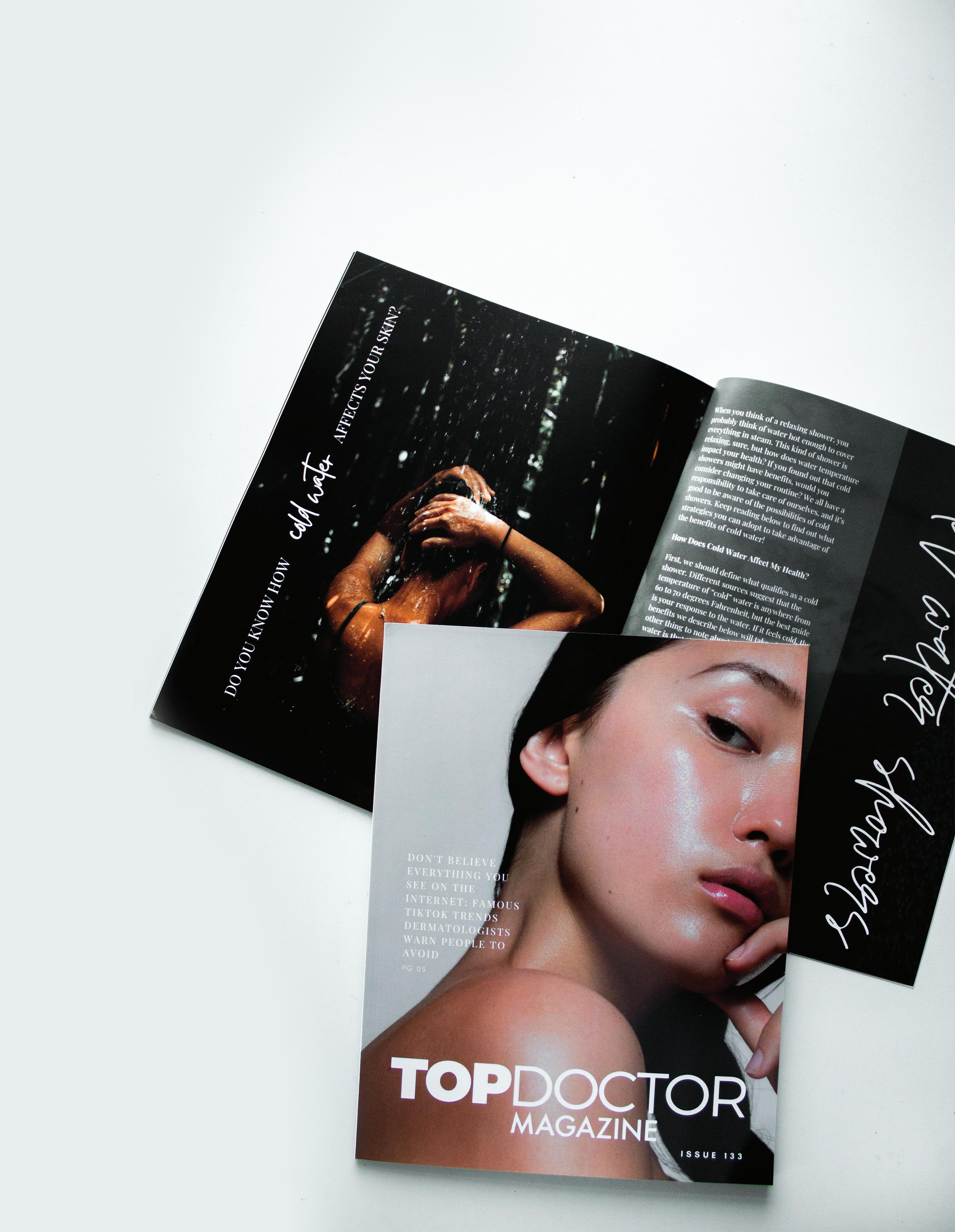



MUCH
DEDICATED FAMILY MEDICINE IN LOS ANGELES, CA


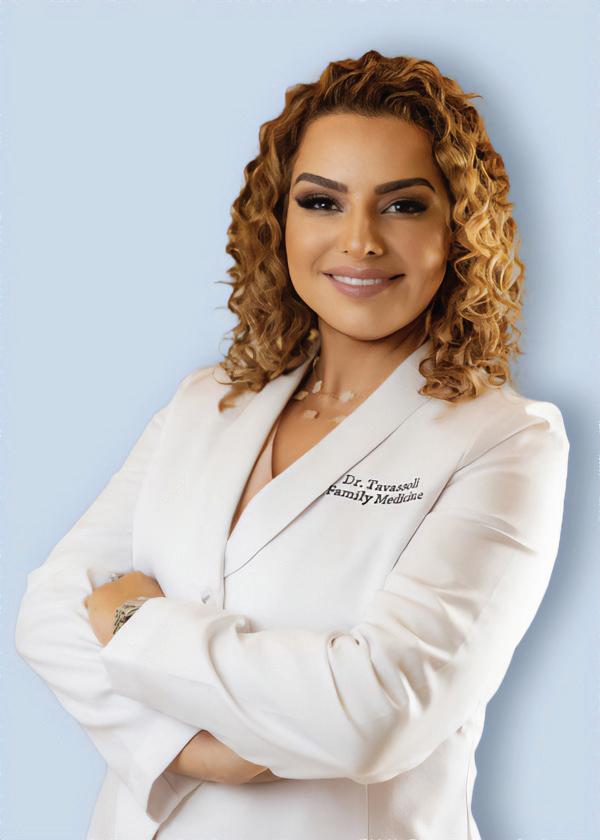

TREATMENT
MORE THAN SIMPLY
With
patient
Learn more • PATIENTS LOVE THE GENTLE APPROACH AND ATTENTION TO DETAIL • CONVENIENTLY LOCATED NEAR THE CEDARS-SINAI MEDICAL CENTER • CURATED INDIVIDUAL TREATMENT PLANS JUST FOR YOU! (310) 688-8080
every
that walks into the Beverly Hills Medical Institute, Dr. Shaghayegh Tavassoli’s primary goal is to build a relationship that will last a lifetime. Her services are strategically centered around comprehensively treating the individual, not just the symptoms.
WRITTEN BY NATHAN PIPKIN
Coming across the experience of a major organ failing, whether in a loved one or yourself, can be an extremely harrowing step in the trajectory of our lives. Often, there is a temptation to give into fears about our health and only see the dire aspects of the situation. Fortunately, we live in an age where medicine benefits from many great advances, and research has provided medical professionals with the understanding and the means to treat health problems even as serious as a ruptured appendix.
What is an Appendix Rupture?

Appendix rupture results from untreated appendicitis—if an individual has appendicitis that goes unnoticed and unresolved, the appendix is compromised and releases harmful bacteria into the abdomen. While it is unpleasant to treat appendicitis, it is much more difficult to treat the infections that can result from the spread of this bacteria.
The good news is that appendicitis is unlikely to go untreated for many individuals with access to hospital care. The intense discomfort of
appendicitis clues many doctors to the possibility of something much more serious than a stomach problem. The unique appendicitis symptoms include sudden pain that starts on the lower right side of the abdomen, which becomes worse when the individual coughs or walks, nausea, vomiting and loss of appetite.
Research has found that if your appendicitis is treated within 36 hours of the beginning of symptoms, then your chance of appendix rupture is less than 2%. And if you get appendicitis treatment 36 hours or more after the start of symptoms, that risk of appendix rupture only increases to 5%. This is not to say that you should delay getting treatment for what you suspect might be appendicitis! It is to say that the chances of your appendix rupturing are not high as long as you pay attention to your body’s signals.
What are the Causes of Appendix Rupture?
WHAT ARE THE CAUSES FOR APPENDIX RUPTURE?
If you or a loved one does experience an appendix rupture, it’s best to know what signs to look out for. Your appendix has a significant amount of bacteria
36

Top Doctor Magazine / Issue 160 / 37

38
on even a normal day, but problems occur when the opening of your appendix becomes blocked, providing an opportunity for said bacteria to become stuck in the appendix and reproduce. With nowhere to go and nothing else to do, this situation leads to infection, eventually resulting in appendicitis.
Untreated appendicitis only becomes more unpleasant. The progression of the infection leads to an excess of bacterial reproduction and pus, which causes the appendix to swell. Once it swells sufficiently for the regular blood flow to get cut off, the part of the organ most lacking this blood flow dies. This wall is ground zero for a tear to take place, which is the actual rupture that the diagnosis ‘appendix rupture’ refers to.
Once the rupture occurs, the symptoms will become unpleasantly obvious: pain around the belly button, vomiting, then a shifting of the pain from the more central belly button area to the lower right side of the abdomen. Individuals encountering appendix rupture also commonly experience fever, decreased appetite, constipation or diarrhea and abdominal tenderness.
It is worth noting that many experiences of appendix rupture include a period of relief, lasting for several hours as a result of the rupture. This is not because all is right with the appendix, but because the steadily-mounting pressure from the blocked appendix has finally been relieved. Although these symptoms are serious and will almost definitely be noticed, it is possible to read them as indications of other illnesses, such as the stomach flu or ovarian cysts. Consider the possibilities and consult your doctor to pursue the best treatment option.
What Does Treatment for Appendix Rupture Look Like?
If you do find yourself in the situation of an appendix rupture, it will be reassuring to know that you can treat it! Treatment involves removing the appendix in a surgical operation. The tricky part is that the infection and inflammation of the region must be under control before you can undergo surgery. To accomplish this, doctors will provide antibiotics and, in some cases, use a tube to remove excess pus from a large abscess.
The technical name for surgical removal of the appendix is an appendectomy, a procedure performed over a quarter of a million times each year in the U.S. There are two different ways to perform an appendectomy: open or laparoscopic. The name of the latter style refers to the laparoscope, a small camera that surgeons can use to view live images of the patients’ internal organs on a television screen. Whether an appendectomy is conducted in an
open or laparoscopic fashion, the basic goal is the same—create a small number of incisions that are only large enough to remove the damaged appendix and interrupt the threat to the patient’s health.
Open surgery is typically preferred because it makes it easier for the surgeon to verify that the infection resulting from the appendix rupture has cleared away completely. Despite the wonderful laparoscopic technology that enables this kind of surgery, the advantages of open surgery cannot be denied in cases of appendix rupture. Either way, full recovery from appendix surgery will typically take between four and six weeks.
How Long Will My Recovery Time Be if My Appendix Ruptures?
The first thing to note is that the surgical appendectomy can only be performed once the infection created by a ruptured appendix has cleared. It can take several weeks for the antibiotics to accomplish this, unfortunately lengthening the amount of time it takes to recover from a ruptured appendix. Appendix rupture recovery can be a slow process, and you should not expect to get out of it without, for example, taking some time off work. It will be a definite disruption to your daily schedule for a time, but recovery is possible, as individuals all across the U.S. can attest to it!
The short answer is that recovery from a ruptured appendix can take as many as 10 weeks or three months because the first stage, during which the patient takes antibiotics to clear away the ruptured appendix’s infection, can take up to four weeks. The second stage, recovery from an appendectomy, can take up to six weeks. Complications from surgery or other health issues could lengthen this timeframe, of course, but it is safe to say that the average recovery time for an appendix rupture and consequent surgery is in the two to three months range.
A Parting Reminder
If your appendix has become blocked and you are developing a case of appendicitis, the best approach is to notice the symptoms early and get treatment as soon as possible. If the situation deteriorates to the point that your appendix ruptures, the processes of surgery and recovery become more difficult and more painful. Fortunately, doctors are trained to recognize the symptoms of appendicitis and possible appendix rupture when they see it, so consult your primary care physician immediately if you suspect that you or a loved one may be on the verge of appendix rupture.
Top Doctor Magazine / Issue 160 / 39

40
Blocking Noise, Blocking Mold, Protecting Health
AN INTERVIEW WITH NATALIA CHUDY
by Gaye Newton
You’re sitting in a quiet room enjoying a good book, when suddenly … RRRROOOOOAAAAARR
RR!! The guy next door decides to let the neigh borhood know he has a motorcycle!
Unwanted noise can be a nuisance; it can disrupt your plans for sleep or relaxation. Some noise is loud, grating and lasts long enough to affect your physical and mental health. Loud noise is especially a problem in workplaces such as manufacturing plants and machine shops with loud equipment constantly running, buildings near an airport or busy highways.
Natalia Chudy is an Acoustical Consultant at Floridabased Acoustiblok®, Inc., which sells noise-abatement materials for businesses, schools and other organizations with loud, disruptive noises generated from the inside or the outside.
“I deal with many different types of clients and educate them on how noise affects your mental health and damages your hearing,” Chudy said. “Insomnia, depression, stress, anxiety, cognitive impairment, memory loss and more.”
A significant benefit of Acoustiblok products is that they
do not develop mold, as other construction products can. Mold can severely affect some people with allergies and other health conditions.
“We have mold-free, sound-blocking material to reduce room-to-room noise, as well as patented mold-free ceiling tiles,” she explained.
ABOUT NATALIA CHUDY
Chudy has an MS (Summa Cum Laude) in Mental Health Counseling, certifications in medical sales and OSHA, and training in acoustics.
“Before this industry, I was in the medical field, working with surgeons in the ER. We were inventing new products that could be incorporated into minimally invasive surgery so patients could recover much quicker,” she shared.
She learned about mold the hard way.
“Mold was something that I stumbled upon accidentally by living in hot, humid Florida in two moldy houses. I always knew that mold was a problem, but I never

Top Doctor Magazine / Issue 160 / 41
understood the complexity of it and how much it really affects people until then,” Chudy explained.
It turned out that the products her employer, Acoustiblok, sells are mold-free, with a rating of 10, 10 being the highest achievable.
“I always explain that to customers. You get a lot of hurricane seasons, so there’s a lot of rain and water damage, and basically, mold is a huge problem here in Florida,” she shared.
THE NOISE PROBLEM
“I’m passionate about acoustics because I know how much noise affects people. I have a sensitivity to noises disrupting sleep, for example. Loud noises wake me up, and I can’t go back to sleep,” Chudy explained.
Certain noises can affect us either physically, mentally or both. Just imagine a mosquito buzzing around your ear while trying to fall asleep. It won’t damage your hearing, but if you can’t find it, you might lose a night of sleep and end up grumpy the next day.
Constant high-decibel noise in the workplace can damage your hearing and affect your health in other ways. Research shows that noise pollution can be linked to cardiovascular disease, sleep problems, stress levels, diabetes and memory problems.
HELPING MULTIPLE INDUSTRIES
“We work with a lot of companies that have to meet OSHA regulations,” Chudy said. “We work with industrial facilities, SCIF rooms, education centers, medical facilities that need to adhere to HIPPA compliance standards, emergency rooms, ICU units, labor rooms, and more.”
Acoustiblok sells to customers in commercial, industrial, residential, marine and transportation settings, each with its unique noise issues.
“We even do veterinary offices, dog hotels and dog boarding places,” Chudy shared. “Dogs are very sensitive to noise. Loud noise can stress dogs out, cause anxiety, aggression, make them lose weight and shed fur. Soundproofing these places creates a safer and more peaceful environment for them.”
A WELCOME SOLUTION FOR CHILDREN WITH AUTISM
Acoustiblok recently offered its sound-abatement abilities to help a family whose children have autism by creating a ‘sensory room.’ Their contribution provided the child with a room designed for significant noise reduction. As a result, the family reported fewer and less severe meltdowns. The room clearly provided relief for the child.
“We have created sensory rooms for children with autism who are very sensitive to noise and have a lot of side effects from loud spaces,” Chudy explained. “Some of these sensory rooms can also be a safe timeout area in places such as airports, busy parks or schools, where the children may become overwhelmed.”
THE MOLD PROBLEM
If you’ve ever had the misfortune of experiencing a flood or roof leak in your home, you probably know how quickly mold can grow and spread if you don’t take care of the affected parts of the house right away. And if mold does set in, you or someone in your home may be subjected to an array of health issues.
Many building materials are conducive to mold growth when wet —drywall, ceiling tiles, paper and wood products, insulation, carpet fabrics and even paint. Acoustiblok’s products; however, will not grow mold.
“I realized how important it is, especially in hospitals, education centers, children’s homes and nursing homes, to have mold-free products in the building materials because they can cause so many health problems,” Chudy explained.
WHAT HEALTH PROBLEMS CAN MOLD CAUSE?
“Almost 25% of the worldwide population has a predisposed gene that makes them susceptible to mold toxicity,” Chudy shared. “Meaning, if they’re in contact with mold for a prolonged period of time, they will become sick with symptoms similar to COVID-19.”
People with a sensitivity to mold typically exhibit symptoms such as congestion, itchy eyes, skin rashes
42
and breathing issues. Studies suggest that it may even lead to asthma in children. For people with conditions such as immunosuppression or respiratory disease, more severe reactions, like fungal infection, breathing problems, rashes, hives and even vision problems, are possible.
“Mold is even more detrimental to developing children. It can cause permanent asthma and learning disabilities,” Chudy explained.
ACOUSTIBLOK PROVIDES HEALTH SOLUTIONS
“Our products don’t just block sound like other sound-blocking products. Instead, they transform low-frequency sound waves into mechanical movement and internal friction energy. As a result, we reduce noise from construction, roads, machinery, the room next door and more,” Chudy shared.
Acoustiblok products help protect from noise pollution’s harmful physical and psychological effects.
“Our mold-free, sound-blocking products help protect from health problems linked to exposure to mold,” she concluded.
Acoustiblok products can be incorporated into almost any industry. Chudy hopes that its sound-blocking and mold-free properties will be mandatory in all building materials in the future. Our health will undoubtedly benefit from them.

“I’m passionate about acoustics because I know how much noise affects people.”
Top Doctor Magazine / Issue 160 / 43
-NATALIA CHUDY
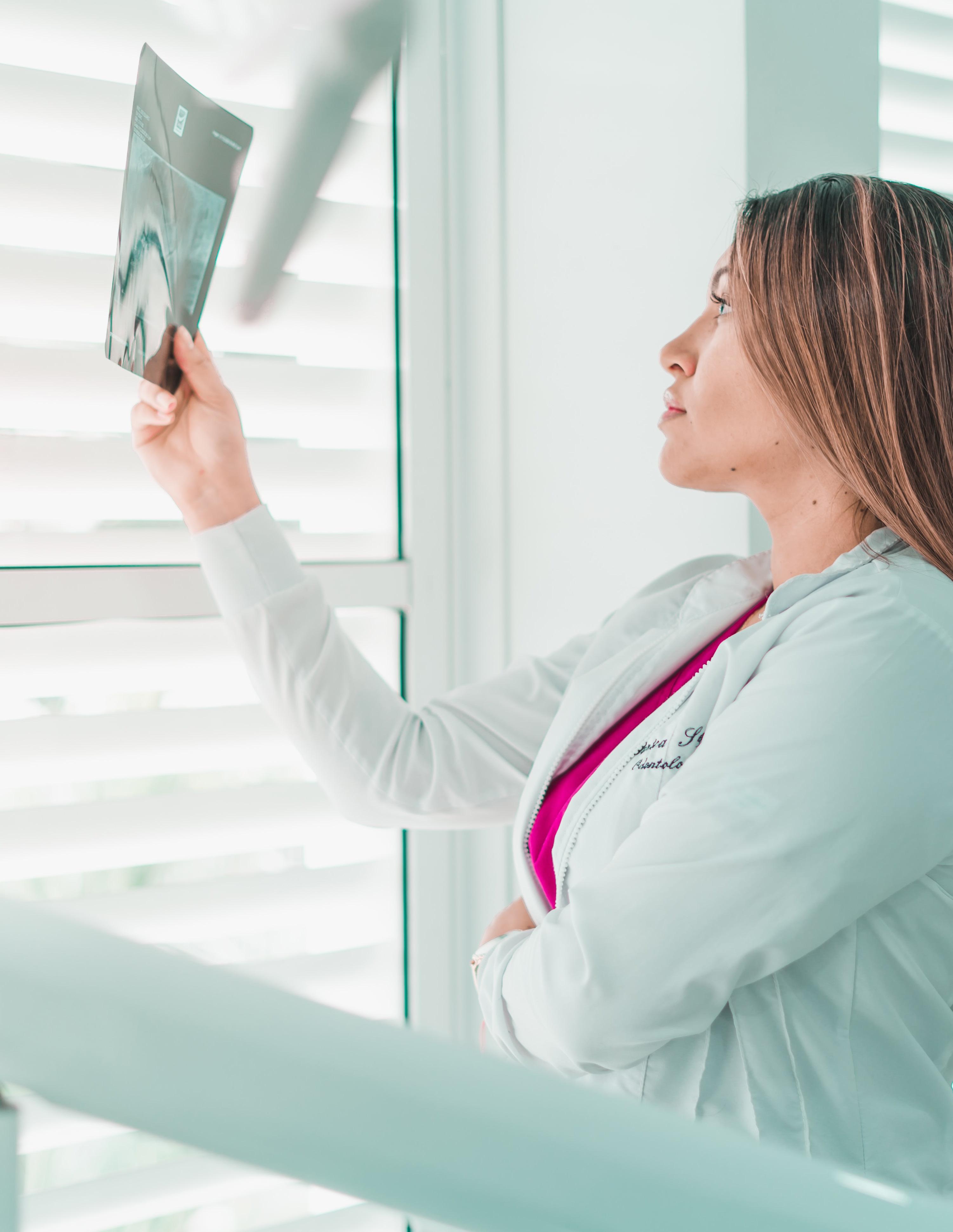
44
How Healthcare Technology Has Changed Over the Years
WRITTEN BY LUKE ARGUE
It’s hard to imagine healthcare without modern technology. Everything, from the big medical machines that scan our bodies to the highly specialized medicines and antibiotics that defend our bodies from infections and viruses, is critical for how we experience healthcare. But much of this modern technology is a recent development, which begs the question: what did medical healthcare look like before some of this advanced technology was created? And how will healthcare continue to develop in response to new technology? We don’t need to dig through the past millennia of human history to answer these questions. Instead, we can simply look back 100 or 200 hundred years and track how technology has developed and changed until today and how it will continue in the future.
Historic Healthcare Technology Healthcare technology has developed significantly in the

Top Doctor Magazine / Issue 160 / 45
past 100 years, but that’s not to say that the 18th century’s healthcare wasn’t very advanced for its time. While we perhaps look back at these technologies as primitive, the technologies of 100 years ago provide the foundation for many of the key pieces of healthcare technology we use today.
X-Ray
The X-ray is an excellent example of an eon-old technology that continues to be critical today. X-rays were discovered in 1895 by Wilhelm Conrad Röntgen and were first used in a medical context on the battlefields of the Balkan War in 1897.
Admittedly, when this technology was first used, the danger of skin cancer or burns from X-rays was unknown. It wasn’t until the second half of the 20th century that we better understood its risks. While they changed the face of healthcare when first introduced, X-rays weren’t perfected until many decades later.
Pacemaker
You’re likely familiar with pacemakers — the technology which helps the heart regulate its beats. But you may not know that it was invented in 1932 and was initially operated by a hand crank. It wasn’t until 1958 that the first pacemaker was implanted into a patient. Here, we see another technology that changed over the years by being perfected and improved for patient care.
Modern Healthcare Technology
Now that we’ve seen the use of technology throughout history, let’s examine how modern technology affects healthcare provision through its improvements.
Antibiotics, Internal Medicine Machines and Computerized Machines
Modern healthcare is almost impossible to imagine without some of these features. For example, how would we treat infections without antibiotics? Or can we even imagine a hospital that doesn’t offer internal medicine machines like valves and dialysis, which help support
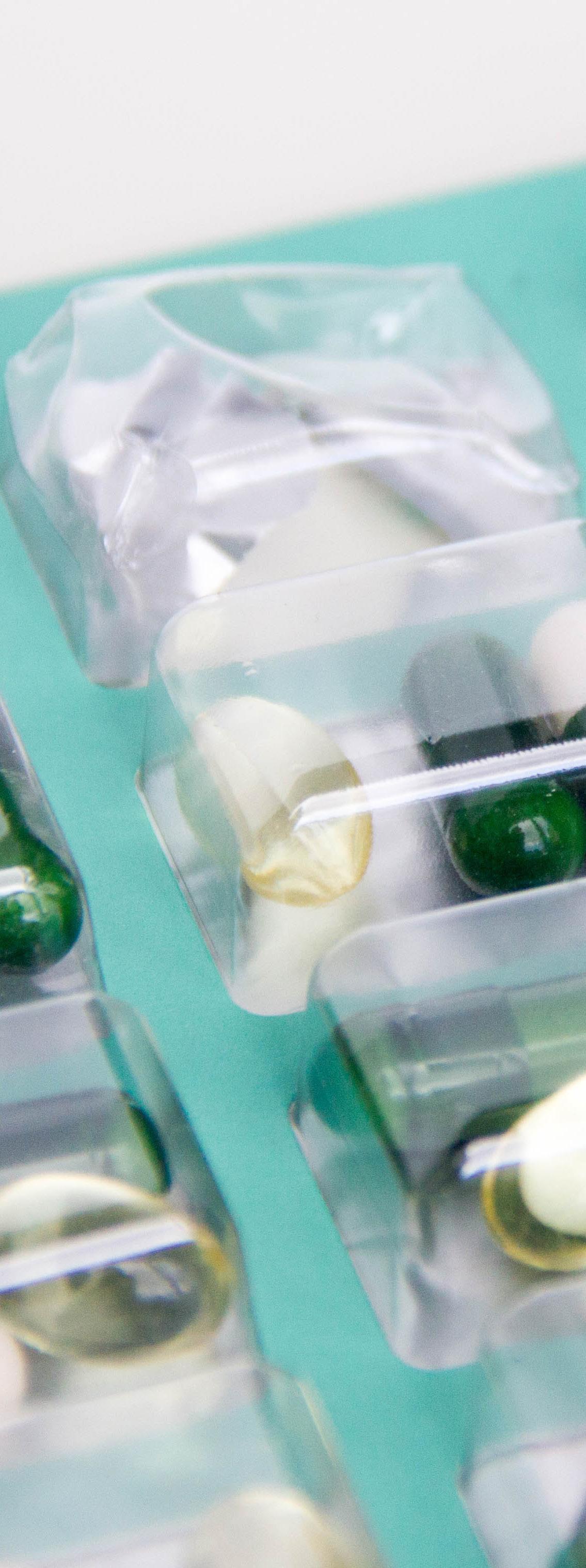
46
the body’s functions? These treatment methods and technologies are at the core of modern healthcare.

If you’re still not convinced that technology is the center of modern healthcare treatments, look no further than the doctor’s office. A close inspection of any hospital or doctor’s office will reveal that nearly every machine is computerized to some scale, not to mention the number of actual computers or tablets you might see in a hospital room. Computers are in almost every piece of medical technology and are impossible to ignore.
Big Data Usage
Big data and modern technology have made it possible to collect an immense amount of information digitally, making it easy to access for both patients and practitioners. Using mass data collection, modern healthcare has developed very sophisticated data collection methods, health apps and electronic records. These advances have removed the need for physical paper records of patient information in favor of delivering that information in a digital form.
Easy Communication
Technology in modern medicine has improved both doctor-to-doctor and patient-to-provider communication. It has allowed patients and providers to communicate quickly and efficiently without the patient ever coming into the office. This new method, called telehealth, allows the provider to inspect their patient and communicate their treatment plan digitally. It facilitates what no one could have anticipated 100 years ago: digital and remote healthcare provision.
The same goes for doctor-to-doctor communication. It has never been easier than it is now for medical practitioners to communicate with each other, share knowledge and expertise and get second opinions. Through the power of the internet and data collection, doctors can examine records of other doctors’ studies and treatments to be as educated and prepared as possible, creating better patient care.
Top Doctor Magazine / Issue 160 / 47
Looking Forward to the Future of Healthcare Technology
These historical and modern developments in healthcare technology are not the end. Looking into the near future, we can already see how developing technologies will continue to shape our healthcare. Two of the most formative future technologies are CRISPR and Metaverse.
CRISPR
CRISPR (i.e., Clustered Regularly Interspaced Short Palindromic Repeats) allows scientists to modify and mend genomes and genetic information. While it is still experimental, this technology has been used in a process dubbed ‘gene editing’ as recently as 2017, with the potential to help reverse or prevent genetic defects and conditions. CRISPR could make many conditions a thing of the past and re-envision everything we understand about the fundamental structure of life.
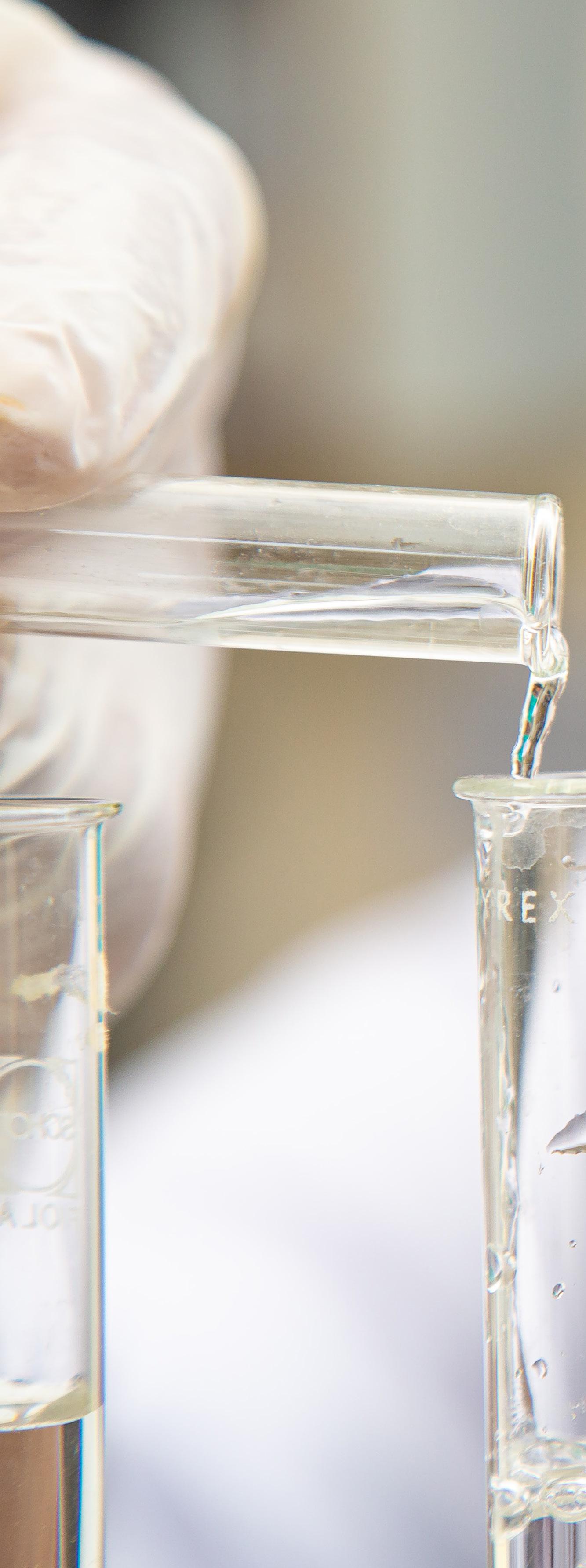
Metaverse
Although already used in healthcare, the Metaverse has the potential to be just as futuristic as CRISPR. Through the usage of AR and VR technology in the Metaverse, doctors will be able to perform surgery virtually. At the same time, patients will be able to visualize human anatomy in ways that will improve education, patient care and surgical skills. It’s no understatement that the Metaverse will completely reimagine how we understand healthcare and even our own bodies.
How Technology Will Continue to Shape the Future
Healthcare is impossible to imagine without technology. Even 200 years ago, technology was a critical part of healthcare provision. As technology advances and is perfected, healthcare improves. It will continue to improve patient care, quality of life and life expectancy with it.
The future of technology in healthcare is bright. Over the past 200 years, medical technology has come far, and in the past 40, it has come even further. As we look forward to perhaps the next 200 years of medical technology development, one can only dream of the possibilities. But some of those possibilities might be closer than one might think!
48
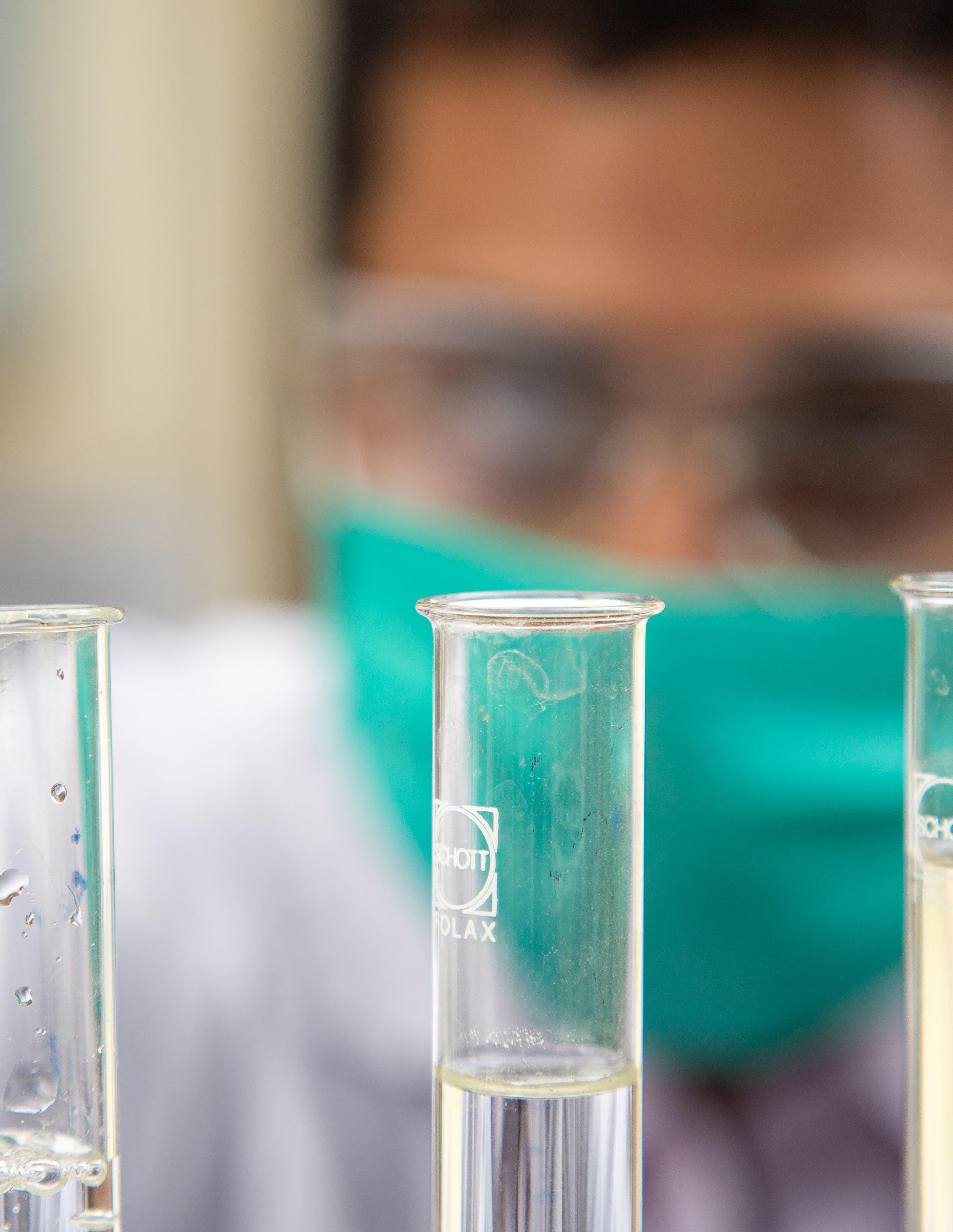
Top Doctor Magazine / Issue 160 / 49

50
Restoring Vitality With Regenerative Medicine
An Interview With Dr. Hassan Bennani, MD
WRITTEN BY GAYE NEWTON
“Aging is just a process. The cells in our body are not programmed to age and die. Aging happens when the cells malfunction. We can prevent all this,” Dr. Hassan Bennani, MD, said.
Dr. Bennani is currently the Founder, CEO and Board Member of LBL, an organization that conducts clinical research and provides protocols for regenerative therapy. For the past 9 years, he has studied and researched the human body’s ability to regenerate and repair itself.
“The first year, I traveled all around the world to conferences. I wanted to meet face-to-face with every scientist talking about the topic. I went to Asia because they are advanced in all regenerative medicine. There are societies around the world for this. People are really getting into it. It’s the future of medicine,” he explained.
What Is Regeneration?
“Regeneration is the ability to regrow damaged or missing body parts — a hand, leg, nose, ear,” Dr. Bennani explained.
Some species, like salamanders or starfish, can regrow major body parts. Humans, however, are more limited in their
ability to regenerate. Our skin, the body’s largest organ, does regenerate to some extent, as we’ve all seen after a cut or a scraped knee. You can donate part of your liver, and it will regrow. Your foot? Not so much.
The areas of our bodies capable of regrowth contain substantial amounts of stem cells.
“We are born with approximately 80 million stem cells. Their principal function is to signal to the other cells to autorepair,” Dr. Bennani shared.
Unfortunately, the auto-repair process doesn’t occur in body parts without or with too few stem cells. Also, as we grow older, the body faces slower regeneration capabilities and degenerative diseases, such as diabetes, multiple sclerosis and rheumatoid arthritis, paving the way for the aging process to take over.
“When we are young, we look younger because the cells are able to auto-repair quickly. We don’t have much damage to repair, so the demand is not as high,” he explained.
Preparing for Stem Cells
“I’ve heard people say that they got stem cell injections, but nothing happened,” Dr. Bennani shared.
Top Doctor Magazine / Issue 160 / 51
Their treatment failed because a critical step was skipped: preparation. There is more to stem cell treatments than simply going to the doctor and getting an injection. Stem cell treatments work by triggering the body’s cells to auto-repair. But those cells must be prepared before the treatment to respond the right way.
Blood testing will be conducted prior to the stem cell treatment to ensure the stem cells will work properly. Your doctor will thoroughly assess your current condition — hormones, inflammation, insulin markers and heart, kidney and liver function. The results will help identify what needs to be addressed before the stem cell procedure.
“If you want a successful treatment, you must prepare your body at the cellular level,” Dr. Bennani said. “Preparation will dictate the success of the treatment.”
That preparation may even include other regenerative treatments. Depending on what needs repair, a patient may receive one or more of the following therapies: Red light. Hyperbaric oxygen. Ozone. Vitamin IV. Electromagnetic Field Therapy.
Dr. Bennani explained that senescent cells — i.e., involved in the aging process — need to be removed, and the cells need to be detoxified before the procedure. It’s similar to cleaning a wound before adding medication and bandages so the wound will heal properly. The preparation phase can take a month or two, so the process should not be sold as a quick fix.
“This is not just about injections. This is a protocol–testing, preparation, then stem cells,” Dr. Bennani explained.
About Stem Cells
Stem cells are the precursors of every kind of cell in the body. They make it possible for the body to continuously replace aging and dying cells, which is why they are central to the practice of regenerative medicine.
“Stem cells,” Dr. Bennani explained, “do their job by communicating to other cells. We call them signaling cells. They hover in the blood and look for an organ in distress. They go there and signal the cells to auto-repair.”
Stem cells for regenerative medicine can come from several sources, although, in the past, they have faced public scrutiny over the belief that they originated from fetal tissue.
“We don’t touch embryos,” Dr. Bennani assured.
The best source of stem cells is blood from the umbilical cord and placenta. They are harvested after the cord and placenta have already been removed, without affecting the mother or child, therefore preventing the tissue from being wasted.
“These cells can be given to any other human, and there is no rejection. They are the most potent cells,” Dr. Bennani explained.
It’s also possible to use the patient’s own stem cells, although they cannot be shared with another patient. The cells reflect the condition of the body they came from.
“If you are 75 years old, the cells will reflect your age,” Dr. Bennani said.
In some cases, therefore, cord or placenta blood cells may be the best alternative for research and treatment.
Regenerative Medicine and Degenerative Disease
The difference between traditional and regenerative medicine lies in their approach to recovery. Traditional medicine treats degenerative diseases with medications and surgery. Regenerative medicine, however, does not address the disease directly. Instead, it gives the body the ability to auto-repair. That is why degenerative diseases such as arthritis, heart disease, diabetes, Alzheimer’s, Parkinson’s and multiple sclerosis show a better response to regenerative medicine.
“All those conditions will benefit from stem cells. This is well documented in supporting publications. For diabetes, the cells we repair help the body regain its ability to secrete insulin,” Dr. Bennani explained.
Regenerative Medicine and Anti-Aging
Anti-aging is more about how you feel on the inside than how you look on the outside. It’s about regaining your body’s ability to function normally and repair itself.
52
It’s important to note, however, that anti-aging treatment is not a quick, one-time thing. Instead, it starts with extensive testing and then continues with a minimum six-month protocol.
“If you have a younger heart,” Dr. Bennani explained, “it (i.e., regenerative medicine) will work much better. If you have everything in better condition, you are going to feel younger because you have more energy. You can sleep, fight diseases and heal much better.”
Working With Traditional Medicine
Because of the effectiveness of the regenerative treatment, the patient may find that they need less medication. But that is left to the primary care doctor to determine.
“We never ask patients to stop or change their medical treatments. Never,” Dr. Bennani assured.
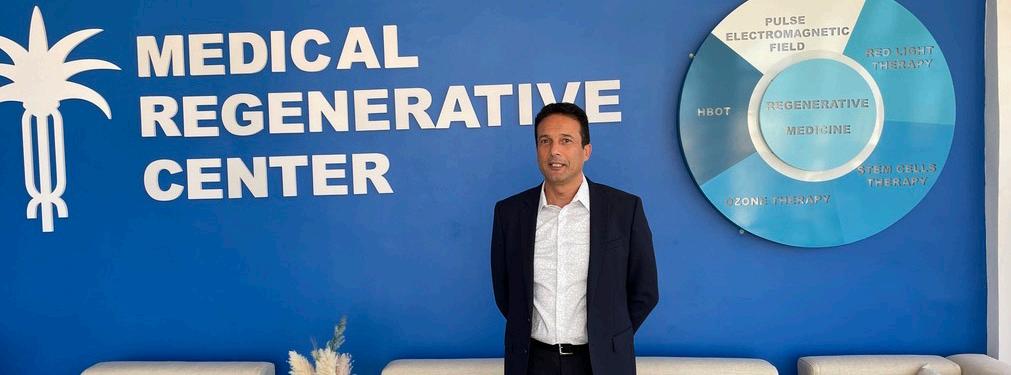
More doctors are becoming educated about regenerative medicine.
“We learn by going to conferences and searching online for publications. At conferences, you meet colleagues who tell you about the experience. And maybe you try either on yourself or one patient,” he shared.
The Future of Regeneration
While still not taught in medical schools, regenerative medicine sparks the interest of a growing number of physicians. As evidence of positive results adds up, they understand what regenerative medicine can potentially do for their patients. Its benefits are not here to replace but to
work in harmony with traditional medicine. More education is still needed, however. Many doctors do not know about the preparation needed to ensure successful stem cell treatments.
“Most just give patients the injections,” Dr. Bennani said. If that were all that was needed, it would be great to market this as a quick fix that would keep patients coming back. But injections alone will not work, and patients will have no reason to return. These doctors need to understand the longer-term preparation required.
“I was once at a conference with about 500 doctors, and all they cared about was giving injections. I took the microphone and gave a talk about how to do it the right way. Some were concerned about patients returning when the protocol was stretched to a longer time period. But patients will return in six months because they will see that they are improving” Dr. Bennani explained.
Regenerative medicine is becoming one of the most published areas in medicine. Big institutions are conducting studies, and the FDA is pushing for clinical trials.
So what should people do if they are considering regenerative medicine?
“They need to learn and research the doctors that are doing it. For how long? What is their experience? What do other patients say? Look at their websites. There are centers all over the country,” Dr. Bennani recommended.
This field is the future of medicine.
“If we can prevent disease and heal our bodies from the inside,” Dr. Bennani said, “we can aspire to live a much better life.”
Top Doctor Magazine / Issue 160 / 53
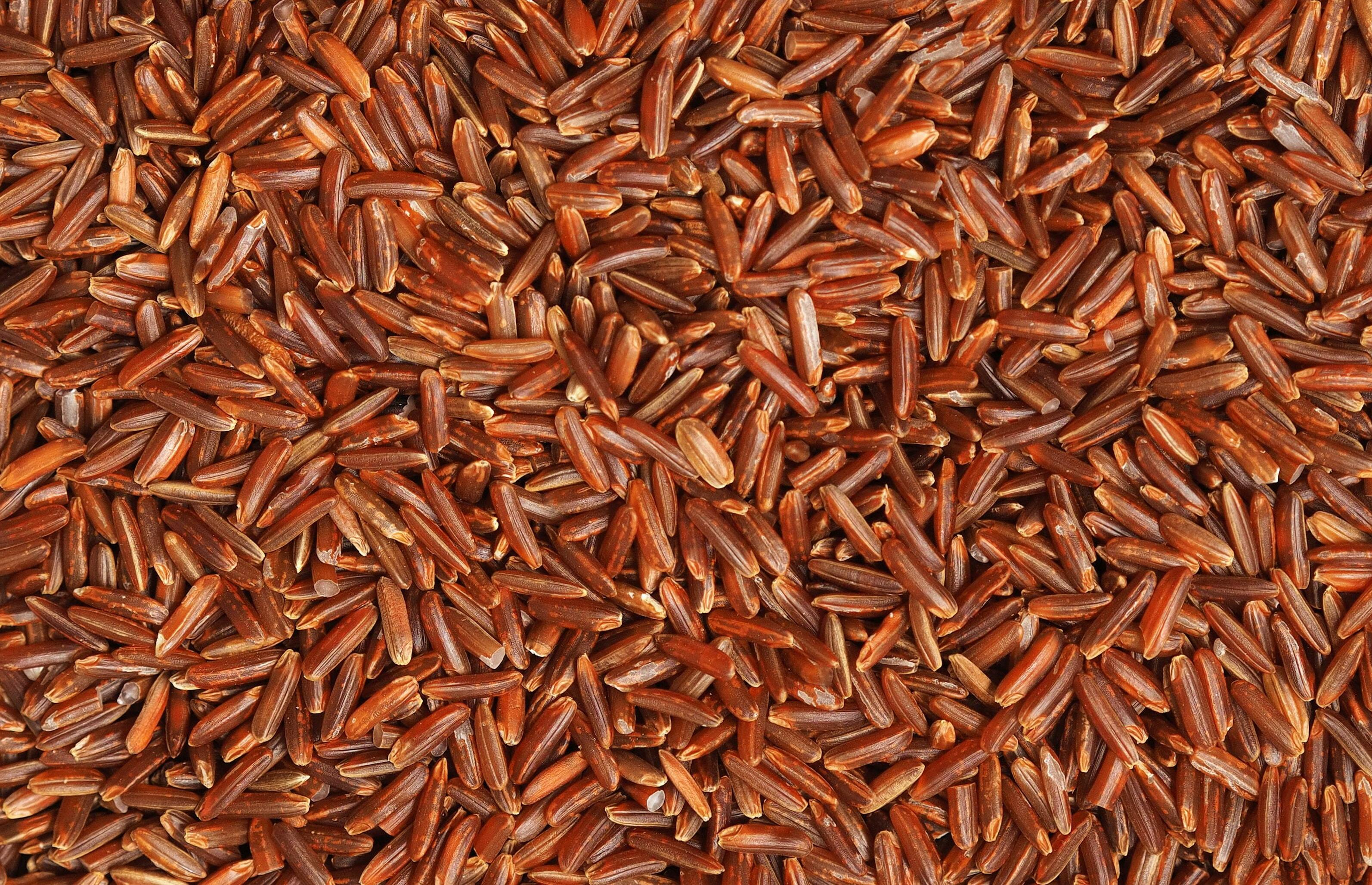
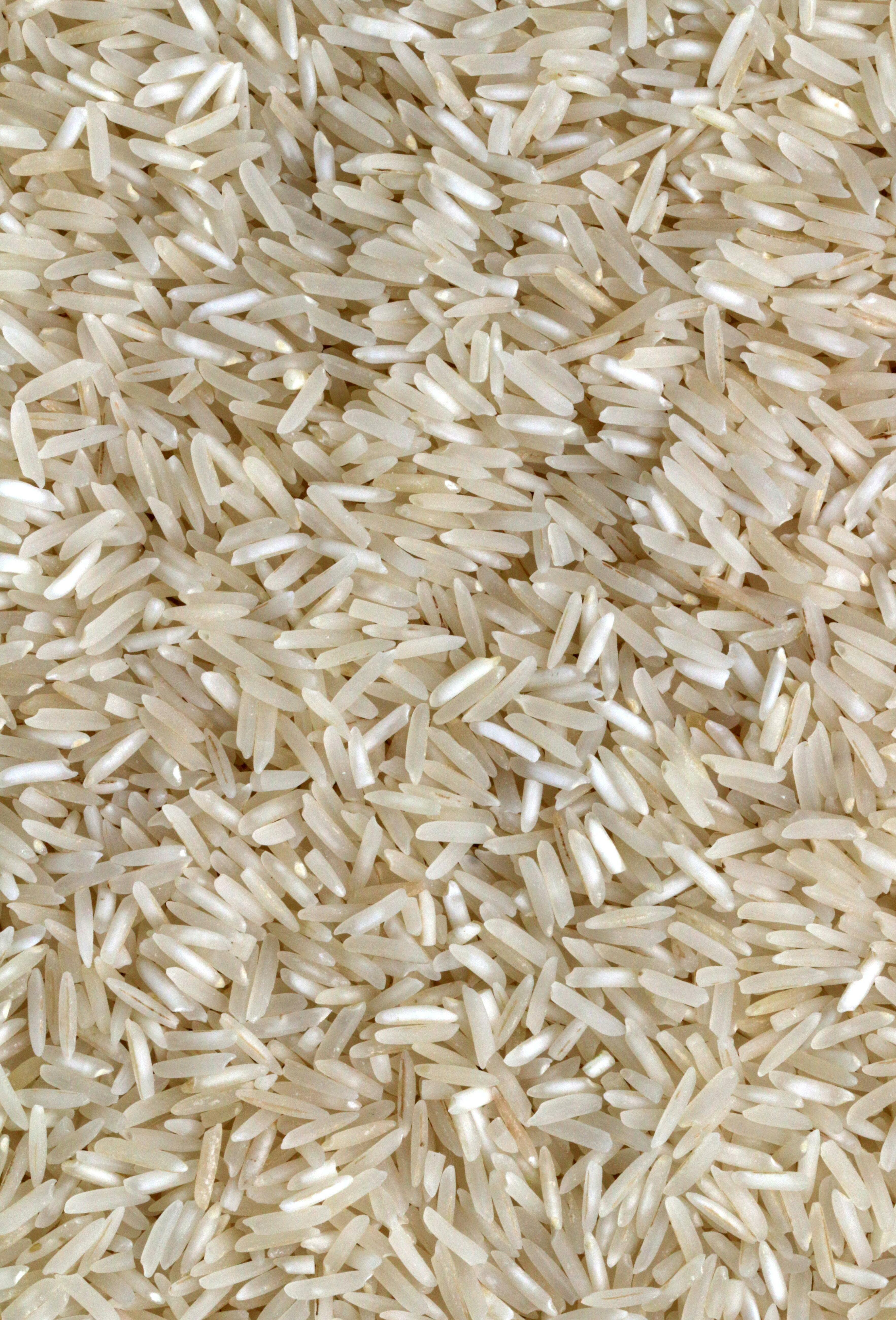
54
Brown Rice vs White Rice Health Benefits
 BY MALINA O. R.
BY MALINA O. R.
Many people have been trying to answer the question: which is healthier: brown rice or white rice? And while it’s true that both bring many health benefits to the table, besides the delicious taste you can infuse your meals with. However, before picking a winner, you have to consider the benefits white rice and brown rice can bring to your health. Some are similar, but some differ. That is why we have to take a deeper look into the world of rice.
Brown Rice vs. White Rice
Before talking about different types of rice, in particular, we have to know where the popularity of rice stems from.
Rice is considered one of the most important foods on the planet, as it contains an impressive amount of calories. More precisely, almost 20% of the world’s calorie intake relies on rice. Almost half of the world’s population has rice integrated into their diets, as rice partakes in the culinary habits of so many cultures!
But the brown rice versus white rice dichotomy is nothing more than a grain of sand in the 100,000 varieties of rice produced worldwide! White rice is by far the popular choice between the two, but that does not mean it is the healthier choice.
Does Brown Rice and White Rice Taste the Same?
What makes these two types of rice taste the way they do is how they are processed to become edible. Almost every part
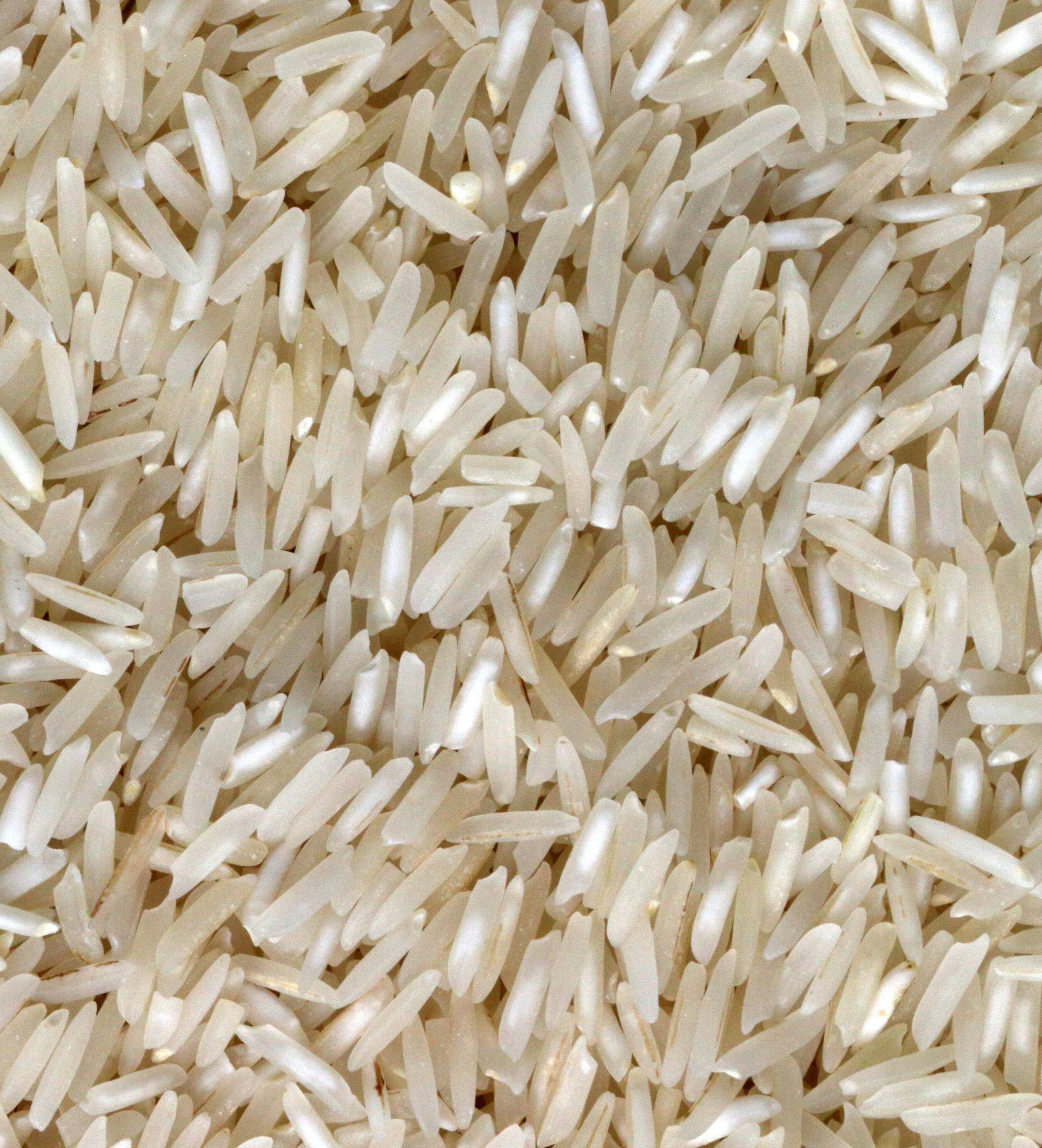
Top Doctor Magazine / Issue 160 / 55
of the grain, such as the bran and germ, is removed, which results in white rice. Brown rice, on the other hand, keeps the bran and germ, components that keep the ingredient and as a ‘whole grain.’ Because of this different processing method, brown rice has a chewier texture and nuttier taste, while white rice seems softer and has a less strong taste.
How is Brown Rice Better Than White Rice?
Brown rice may not be present in many people’s diets compared to its white counterpart, but that does not mean it doesn’t have many health benefits. People like to argue between the two types of rice, but there is a clear winner regarding benefits from a health perspective, and that winner is brown rice!
Rich in Nutrients
The nutrient content of brown rice is not significantly different compared to white rice. Both brown and white rice contain fiber, antioxidants, minerals and many vitamins, although white rice is slightly richer in iron.
Positive Results over Blood Sugar Levels
Some researchers suggest that eating brown rice may help lower your blood sugar levels. As your blood sugar levels decrease, so are the chances of developing type 2 diabetes. By switching the whole grains and white rice in your diet with brown rice, you can experience these benefits in no time!

The only downside of eating white rice is that, in large quantities, it can increase the risk of diabetes. That is why you have to moderate your white rice intake, as it increases blood sugar levels much faster than brown rice. You can prevent this from happening by cooling your white rice before eating it.
May Reduce the Risk of Heart Disease
It has been suggested in some studies that brown rice can help reduce the risk of developing heart diseases. People who eat whole grains, such as brown rice, reduced their risk of heart disease by 21%. In addition, brown rice can lower the bad cholesterol in your body.
Aids in Weight Control
Both types of rice are known to aid weight control. Many studies show that integrating whole grains into
56
your diet will lower your body weight. However, brown rice is a more effective weight control option because it contains more nutrients than white rice. As brown rice positively affects your sugar blood levels, it also aids weight loss.
White Rice Does Not Contain Antinutrients
Compared to brown rice, white rice does not contain antinutrients. Antinutrients are compounds found in food that may reduce the body’s ability to absorb different nutrients.
Unfortunately, brown rice contains an antinutrient called phytic acid that can impair and make it difficult for your body to digest. Although it offers various health benefits, phytic acid reduces the body’s ability to absorb iron and zinc.
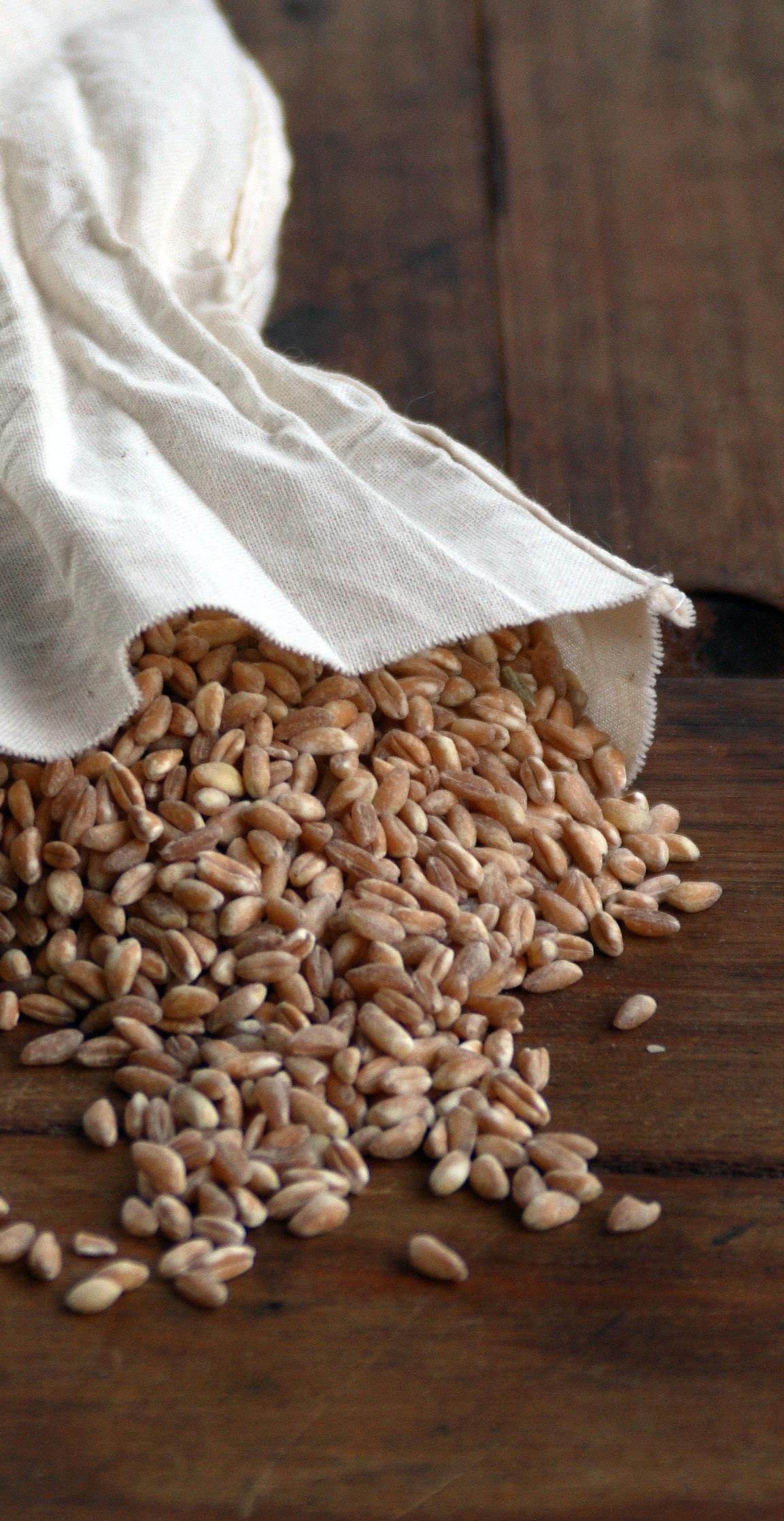
Arsenic Levels
Brown rice tends to contain slightly higher levels of arsenic compared to white rice. Eating arsenic for long periods can increase the risk of chronic diseases such as cancer, heart disease and type 2 diabetes. But this is not something to be afraid of if you eat rice in moderation or with other foods!
How to Cook Brown Rice
There are many ways to cook brown rice, although the cooking pattern is always similar.
The first thing you have to do is rinse the rice in order to remove any excess starches, which, if not eliminated, can turn the rice gummy as it cooks. Then, measure the water you have to use for the cooking — two cups of water for every cup of rice is a great ratio. Also, add some extra-virgin olive oil to the pot as you stir the rice.
When you notice the water boiling, reduce the heat and cover the pot for about 45 minutes. During this time, the rice will absorb the water, giving the grain a tender and fluffy texture. After you let the rice absorb the water, turn off the heat and let it sit for another 10 minutes. Remove the lid afterward and slowly stir the rice with a fork.
A Parting Reminder
The answer to the question, is brown rice or white rice better for you, has only one clear answer — brown rice takes the cake! Consider including brown rice in your diet for better health and improved food taste!
Top Doctor Magazine / Issue 160 / 57
Do Children Need Milk for Strong Bones to Develop?
 WRITTEN BY PETER C.
WRITTEN BY PETER C.
58
As parents, we want our children to get all the nutrients they need for healthy growth. But one question that often comes up is whether or not kids need to drink milk for strong bones to develop.
Calcium is an essential mineral that helps in the development of strong bones. It provides structural support to the body’s bones and teeth.
Most calcium comes from dairy products. So, naturally, milk is an integral part of a child’s diet. However, calcium is not the only thing needed for strong bones; vitamins C, D, B12, K, carotenoids and minerals are also necessary.
Does Milk Make Strong Bones?
Milk is a source of calcium, but many other sources of calcium are more effective in promoting bone growth and development. These include leafy green vegetables, tofu, nuts and seeds.
Some children may have low vitamin D levels and may not be able to absorb any additional benefits from milk. In that case, it would be better to rely on other foods like soy, almond milk, oysters or salmon for bone health benefits instead.
There is conflicting data regarding bone strength for kids and milk consumption. Some studies show that bone density from milk sources may be overstated, although other studies indicate the opposite.
A drop in dairy product consumption coupled with an increased intake of other foods may enhance bone development in lactose-intolerant children.
Other Food for Strong Bones
The key to strong bones is a healthy diet that includes foods rich in vitamins and minerals. Vitamins such as vitamin C, D and K have been shown to reduce bone deterioration in adults and increase bone density. Foods rich in calcium also help improve the strength of bones because calcium helps maintain the balance between the minerals needed for healthy bones, such as magnesium, phosphorus, potassium, sodium and fluoride. Dairy products
such as milk, cheese and yogurt are all sources of bone-strengthening vitamins and calcium.

However, a significant majority of the world is lactose intolerant, so it is important to find nondairy foods like certain fruits and vegetables that can help reduce the risk of osteoporosis and increase bone strength.
Let Your Kids Run Around
Exercise is essential for children’s growth and physical well-being, so aside from just drinking milk, let them run around as well. Studies show that early physical activity is a better indicator of bone health than dairy intake. Physical activity also helps children establish lifelong healthy habits. Children need to engage in various physical activities that help them develop not just bone density but also their motor skills and increase muscular strength.
Children should be encouraged to participate in various sports such as climbing, balance beam, gymnastics, hockey, skiing and soccer. Along with these sports, children should also engage in exercises that strengthen the core muscles, such as plank exercises and bicycle crunches. An excellent way to make sure children are getting enough exercise is by setting aside time each day for physical activity.
With physical activity, children need to replenish the energy they consume, and you can fulfill this need by eating bone-strengthening food. Children should try to avoid high-sugar foods such as donuts, pastries and candies as much as possible to improve bone growth.
A Parting Reminder
There is no simple answer to the question of whether or not children need milk for strong bones to develop. Milk is a good source of calcium and nutrients, which is why it is often recommended for growing children. However, other sources of calcium can be just as effective, so speak with a healthcare professional to determine what is best for your child.
Top Doctor Magazine / Issue 160 / 59
Polycystic Ovary Syndrome (PCOS)
WRITTEN BY CATHERINE PANNELL
September is PCOS awareness month, yet re search suggests that up to 70% of women who struggle with the condition are unaware that they have it and have not been diagnosed. These numbers are staggering, considering PCOS is a common disorder affecting up to 15% of women.
So, what exactly is PCOS, and how can it affect the body? More importantly, how can women manage its symptoms?
Our willingness to accept stress into our daily lives reveals how little we understand stress’ effect on our lives. Stress is not a benign yet negative emotion; it’s a serious mental illness with serious effects on our physical health.
WHAT IS POLYCYSTIC OVARY SYNDROME?

Polycystic ovary syndrome (or PCOS) is a common condition that causes ovaries to produce excessive levels of male hormones (or androgens). Small, fluid-filled sacs or cysts form around follicles in the ovaries, producing abnormally high levels of androgens. These cysts can hinder ovulation, resulting in decreased fertility and irregular periods.
WHY POLYCYSTIC OVARY SYNDROME OCCURS
While researchers do not know precisely why polycystic ovary syndrome occurs, women with family members who suffer from PCOS are at higher risk for developing this condition. Though it is classified as an endocrine disorder, some research suggests that PCOS may be an autoimmune disease.
EVERYTHING YOU NEED
KNOW
TO
ABOUT
60
PCOS TYPES
Polycystic ovary syndrome is often grouped into four primary types based on the syndrome’s most common contributing factors. However, only three of these types are technically examples of PCOS; other temporary conditions can cause PCOS-like symptoms but will naturally resolve over time.
Firstly, insulin resistance is a condition correlated with PCOS. Insulin resistance prevents the body from reacting appropriately to insulin, causing the pancreas to produce more of the hormone to regulate blood glucose. In turn, high insulin levels stimulate the ovaries to produce androgens. If untreated, this variety of PCOS can lead to the development of type 2 diabetes. It is also the most common type of PCOS, affecting up to 70% of patients.
Secondly, chronic low-grade inflammation can cause ovaries to produce excess androgens. Doctors can test for this condition by performing blood tests.
Thirdly, PCOS is often triggered by stress, which may be referred to as adrenal PCOS. Elevated stress levels can lead to the production of higher levels of hormones such as cortisol. The presence of these hormones can lead to irregular periods, weight gain and other PCOS symptoms. In some cases, managing stress can help reduce PCOS symptoms. However, hypothalamic amenorrhea — caused solely by stress — is a separate condition, not a type of PCOS.
Finally, post-pill PCOS is the common name for a condition that often appears in women who have recently stopped taking hormonal birth control pills. In this situation, the ovaries naturally produce androgens, leading to many of the same symptoms seen in PCOS. However, this condition is not permanent and is not technically a type of PCOS.

Top Doctor Magazine / Issue 160 / 61
HOW DOES POLYCYSTIC OVARY SYNDROME AFFECT THE BODY?
Polycystic ovary syndrome can have a wide range of effects on the body. It can cause weight gain — obesity and weight loss difficulties are present in approximately 80% of PCOS patients.
Because of its effect on ovulation and hormones, the condition can also lead to periods that do not occur regularly, are very heavy or are very light.
Other physical symptoms are caused by increased levels of androgens, such as:

Excess hair growth (or hirsutism);
Acne;
Hair loss.
Individuals with PCOS may also notice patches of darkened skin around the armpits, neck and breasts and skin tags around the armpits and neck.
IS POLYCYSTIC OVARY SYNDROME DANGEROUS?
Though not deadly, PCOS can become dangerous if left untreated. It often contributes to high blood pressure and puts patients at an increased risk of heart disease or stroke. It can also contribute to the development of type 2 diabetes. Finally, it can increase the risk of endometrial cancer and complicate pregnancy.
A diagnosis of PCOS typically involves three criteria, including irregular periods, increased levels of male hormones and ovarian cysts. Patients who meet at least two of the three criteria can be diagnosed with PCOS.
HOW PCOS AFFECTS PREGNANCY
Because it causes infrequent ovulation, polycystic ovary syndrome can reduce the likelihood of pregnancy. In fact, for women of childbearing age, PCOS is a common cause of infertility. The condition increases the risk of complications such as gestational diabetes and the likelihood of premature birth or even miscarriage.
CAN POLYCYSTIC OVARY SYNDROME BE CURED?
While researchers have not found a cure for PCOS, medications and lifestyle changes can be used to treat symptoms. The exact treatment used for an individual patient may vary based on their symptoms and whether the patient wants to get pregnant.
62

Top Doctor Magazine / Issue 160 / 63
Spironolactone and Metformin for Polycystic Ovary Syndrome
Some patients may use antiandrogens (i.e., drugs that mitigate the effects of androgens) like spironolactone to treat PCOS symptoms such as excess hair growth. Others may take metformin for PCOS since it helps decrease the production of androgens by aiding insulin processing. For those who wish to become pregnant, medications that cause ovulation may be prescribed. Regulation of menstrual cycles may also be achieved through the use of birth control pills.
Even though the condition is not curable, routine lifestyle changes can help manage the condition. For example, weight loss can lead to better insulin sensitivity and lessen the severity of symptoms. For PCOS patients, nutrients to avoid include carbohydrates, which contribute to insulin resistance and inflammation, thus worsening symptoms.
Even though PCOS is not curable, treatment can

significantly reduce the condition’s manifestations, improve patients’ quality of life and reduce longterm health risks.
A PARTING REMINDER
Polycystic ovary syndrome is a common condition that can affect women’s reproductive systems. There is no known cause, but genetic factors likely play a role in determining where PCOS manifests. Symptoms can include weight gain, irregular periods, excess hair growth, acne and hair loss.
The syndrome is common, and patients are not alone. Various resources, including drugs that help manage insulin, are available to treat the condition. In some cases, lifestyle changes such as the implementation of regular exercise can also help manage symptoms. If you believe you may have PCOS, take action to protect your long-term health and consult a doctor immediately.
64

Top Doctor Magazine / Issue 160 / 65
The National Sculpture Society New York City award ed Richard MacDonald’s Duality, the 2022 Maurice B. Hexter Medal of Honor. Exemplifing the idea that the melding and balancing of opposites creates bal ance, harmony, and insite into the pervasive principle of Yin & Yang. Masterful sculptors of every era and culture move into the complex field of multiple fig ure compositions to explore the full emotional range possible when figures interact. Multiple figure com positions create in implied narrative, a suggested relationship, and ultimately, for the viewer. Richard MacDonald has been exploring the complex visual, aesthetic and conceptual relationships of multiple figures throughout his career, and the newest work Duality highlights a theme that runs through the di verse collection. w brings into focus the idea that darkness is defined by light, strength is balanced by tenderness, and that in the balance of opposing forces there is a center of tranquility and peace. It is the age-old concept of Yin and Yang echoed in a new form, and through this lens earlier works can be seen to exhibit the same dynamic balance.
NATIONAL SCULPTURE SOCEITY MAURICE B. HEXTER PRIZE WINNER

THEARTOFRICHARDMACDONALD.COM | 702.730.3990
RICHARD MACDONALD
THE ART OF RICHARD MACDONALD GALLERY | BELLAGIO RESORT AND CASINO “O” THEATRE 3600 S LAS VEGAS BLVD LAS VEGAS NV 89109


REPLACEMENT Therapy Hormone
WRITTEN BY ANN Y.
68
The inevitable aging process comes with significant changes in how your body produces hormones, especially sex hormones. Hormone replacement therapy (HRT) can ease the burden of the natural decline in the production of sex hormones as your age, as it can help balance estrogen, progesterone and testosterone levels in your body.
Hormone Replacement Therapy
Benefits
HRT has several health benefits for women. Hot flashes, nocturnal sweats and vaginal dryness and pain are just a few menopausal symptoms that hormone replacement therapy can alleviate.
Men are not exempt from the symptoms of sex hormone decrease. After the age of 30, a man’s testosterone levels
begin to fall by about 1% every year. Hormone replacement therapy’s benefits in treating andropause, the male equivalent of menopause.
Hormone replacement therapy gives men and women more energy, restores or boosts libido, stabilizes their moods, reduces anxiety and depression, improves mental clarity and attention and helps them get back in shape. Aside, hormone replacement therapy can help restore your youthful look.

Hormone Replacement Therapy Pros and Cons
The benefits of hormone replacement therapy for both men and women are improved energy, balanced mood, increased libido and improved sleep.
The disadvantages of hormone replacement therapy for
Top Doctor Magazine / Issue 160 / 69
women include an increased risk of breast cancer, deep vein thrombosis, gallbladder, heart attack, stroke and uterine lining growth.
The disadvantages of HRT for men are an increased risk of fatigue, impotence, hot flushes and sweating, gynecomastia, memory problems, mood swings, depression, bone changes and cardiovascular problems.
Where Can I Get Hormone Replacement Therapy?
If you want to get hormone replacement therapy, find a reliable General Practitioner (GP) or physician in your area. You can commence hormone replacement therapy as soon as you start experiencing menopausal symptoms, and no tests are usually required. A physician can explain the many types of HRT and assist you in selecting one that is right for you.
You’ll most likely start with a low dose and gradually increase it. The treatment may take a few weeks to kick in, and there may be some side effects at the start. Your doctor will advise you to attempt treatment for three months to see if it helps. If it doesn’t, they may recommend adjusting your dose or switching to a different type of HRT.
Hormone Replacement Therapy for Men
Men with unnaturally low levels of testosterone can benefit from hormone replacement therapy. However, whether hormone replacement therapy can benefit healthy men


whose testosterone decline is simply caused by aging is less certain. Therefore, talking to your physician about safer alternatives is essential to make up for your natural decrease in testosterone.
Menopausal Hormone Therapy for Women
Menopausal hormone therapy uses female hormones, especially estrogen, to treat the menopause symptoms of sex hormone decrease, such as hot flashes and vaginal soreness.
Hormone Replacement Therapy Types
Bioidentical hormone replacement therapy (BHRT) and natural or traditional hormone replacement therapy are the two types of hormone replacement therapy (HRT). Both hormone replacement therapies are made up of varying amounts and combinations of hormones and exist in various forms, including pills, creams, gels and patches.
Natural Hormone Replacement Therapy
Natural hormone replacement therapy uses hormones collected from plants to correct hormonal imbalances. The treatment entails ingesting plants or supplements with components that can help correct hormonal imbalances.
70

Top Doctor Magazine / Issue 160 / 71
“Physicians have been hesitant to recommend hormone replacement therapy in the past, especially for those with specific risk concerns. However, most doctors now agree that hormone replacement therapy is safe for women up to the age of 59 who are experiencing moderateto-severe hot flashes and vaginal dryness and are within 10 years of menopause.”

72
“You deserve to live life to the fullest even at your menopausal and andropause stage!”
Patients choose this approach to treat hormonal imbalances and perimenopause and menopause symptoms.
Bioidentical Hormone Pellet Therapy
Bioidentical hormone pellet therapy uses synthetic hormones derived from plant estrogens to address hormonal imbalances and depletion. This form of treatment implies inserting small, rice-sized pellets under the skin, which gradually release certain amounts of hormones over a determined period of time. Bioidentical hormone pellet therapy is ideal for patients requiring long-term hormone replacement treatments.
Thyroid Hormone Replacement Therapy
Thyroid hormone therapy becomes imperative when your thyroid gland does not produce enough thyroid hormone on its own, causing hypothyroidism. Thyroid hormone replacement therapy is commonly administered as a tablet to treat an underactive thyroid gland that produces little or no thyroid hormones.
Progesterone for Hormone Replacement Therapy
Laboratory-made progesterone for hormone replacement therapy is widely used to help patients restart menstrual periods that have abruptly halted (i.e., amenorrhea), cure abnormal uterine bleeding caused by hormonal imbalance and treat severe premenstrual syndrome symptoms (PMS).
Hormone Replacement Therapy for Weight Loss
Your hormonal imbalance is what makes you struggle to lose weight. Fortunately, hormone replacement therapy and weight loss can go hand in hand. Research has shown that hormone replacement therapy effectively prevents weight gain and encourages weight loss by encouraging lipid oxidation.
Hormone Replacement Therapy Cost
Questions regarding the cost of hormone replacement therapy sit on the minds of numerous patients. Hormone replacement therapy might cost anywhere from $30 to $90 per month. The cost of your therapy will be determined by several factors, including the chosen form of treatment and the number of hormones required in each dose. However, bioidentical hormone replacement therapy is more expensive, costing between $200 and $500 per month.
Is Hormone
Replacement Therapy
Covered by Insurance?
The majority of hormone replacement therapies approved by the FDA are covered by insurance. However, the level of coverage for each product is determined by your insurance plan. For example, most insurances do not cover compounded bioidentical hormones. Your therapy and insurance plan will impact the coverage of your treatment.
Is Hormone Replacement Therapy Safe?
Physicians have been hesitant to recommend hormone replacement therapy in the past, especially for those with specific risk concerns. However, most doctors now agree that hormone replacement therapy is safe for women up to the age of 59 who are experiencing moderate-to-severe hot flashes and vaginal dryness and are within 10 years of menopause.
A Parting Reminder
Hormone replacement therapy is a splendid treatment option for both andropause and menopause symptoms. Your physician will recommend the correct hormone therapy for your case after a thorough consultation. You deserve to live life to the fullest even at your menopausal and andropause stage!
Top Doctor Magazine / Issue 160 / 73




 - ALBERT EINSTEIN
- ALBERT EINSTEIN






















 WRITTEN BY M Ă LINA O. R.
WRITTEN BY M Ă LINA O. R.














































 BY MALINA O. R.
BY MALINA O. R.



 WRITTEN BY PETER C.
WRITTEN BY PETER C.
















